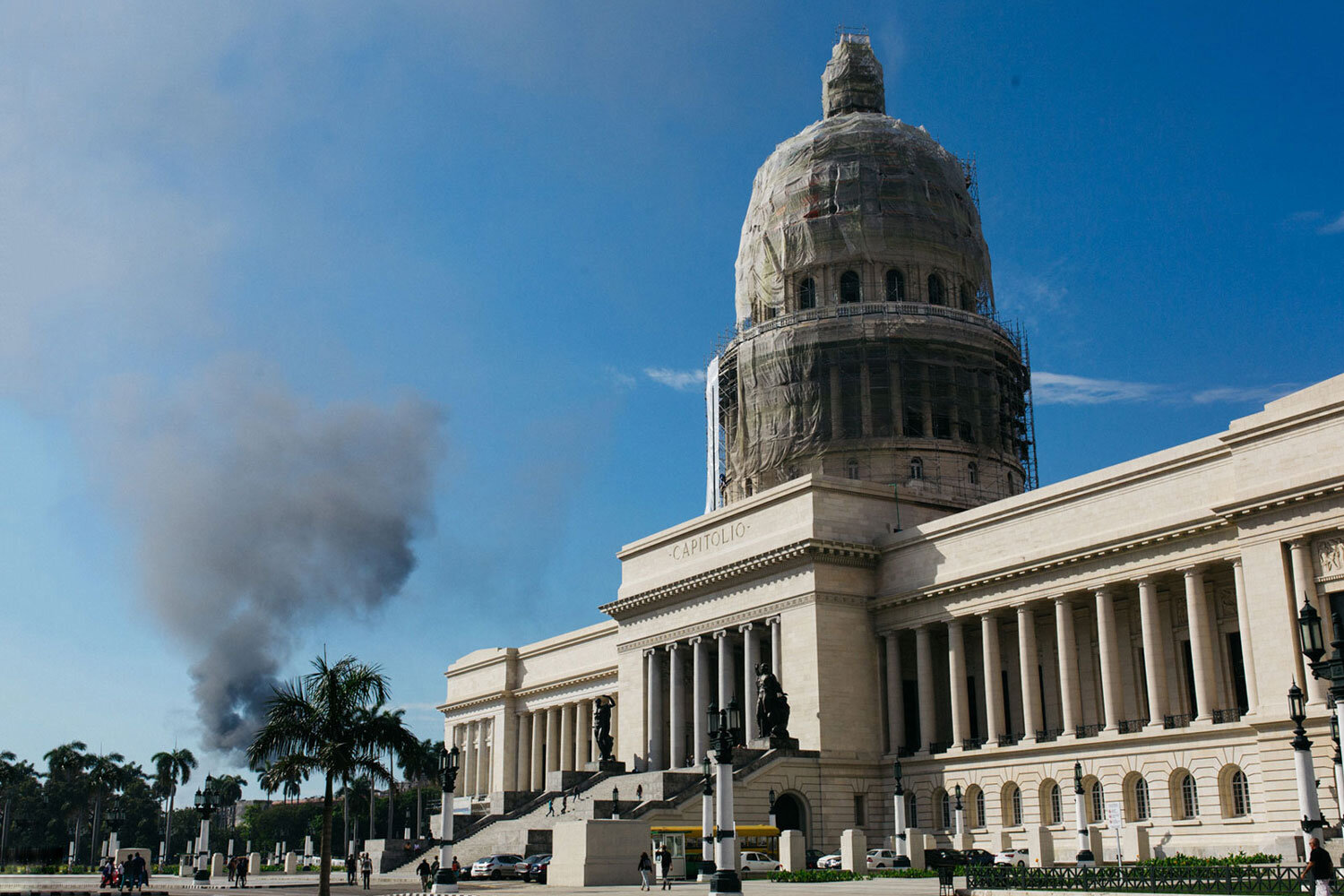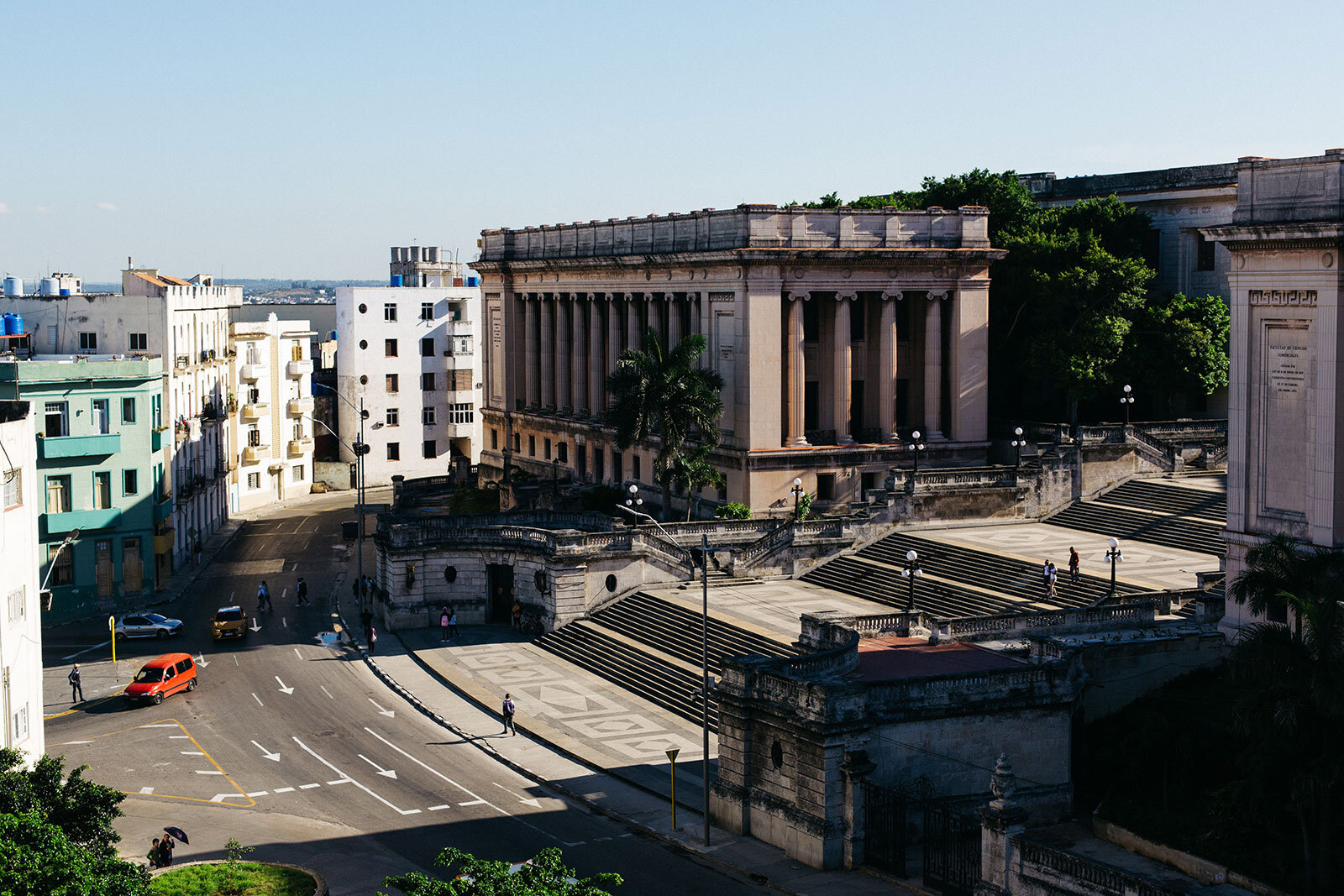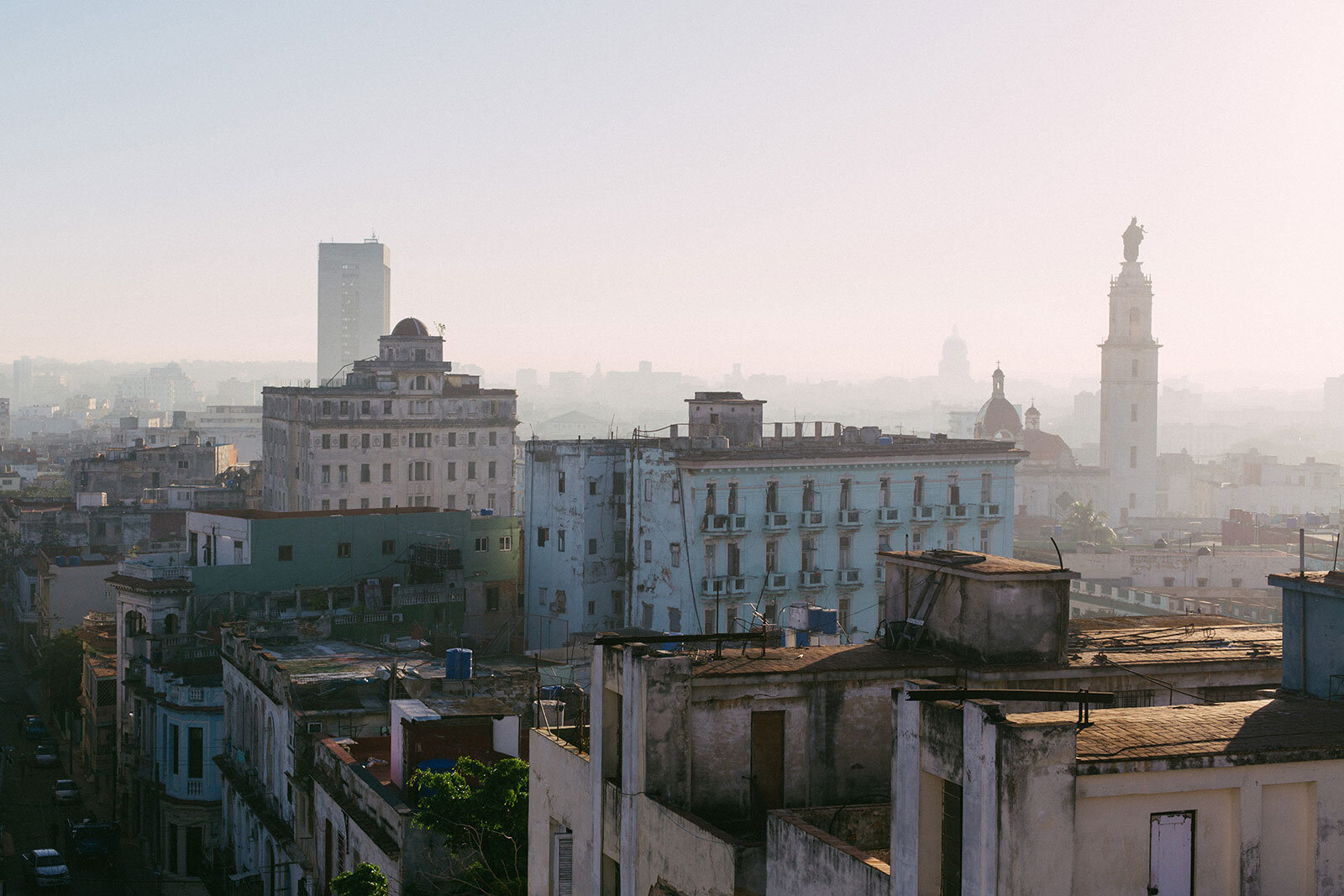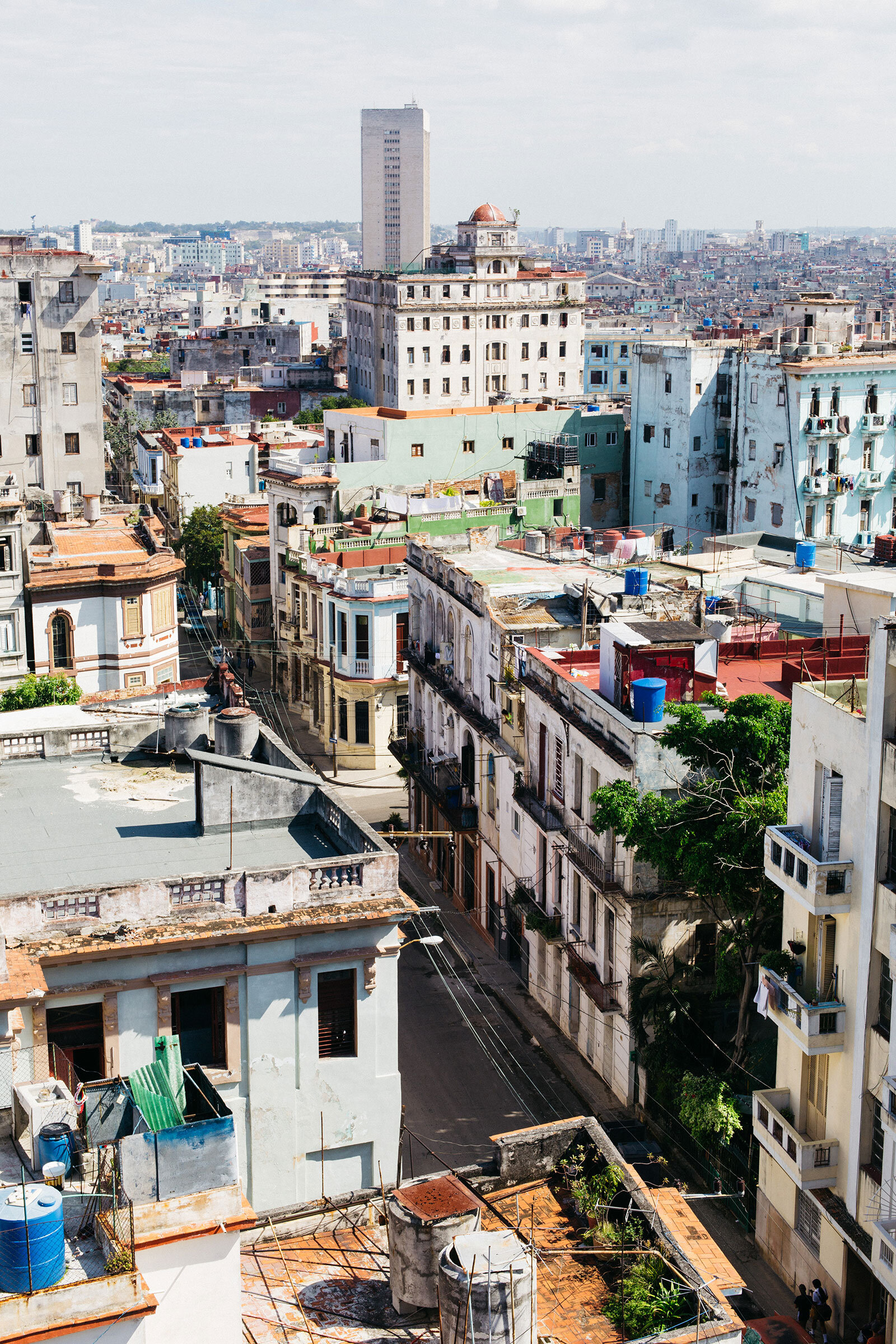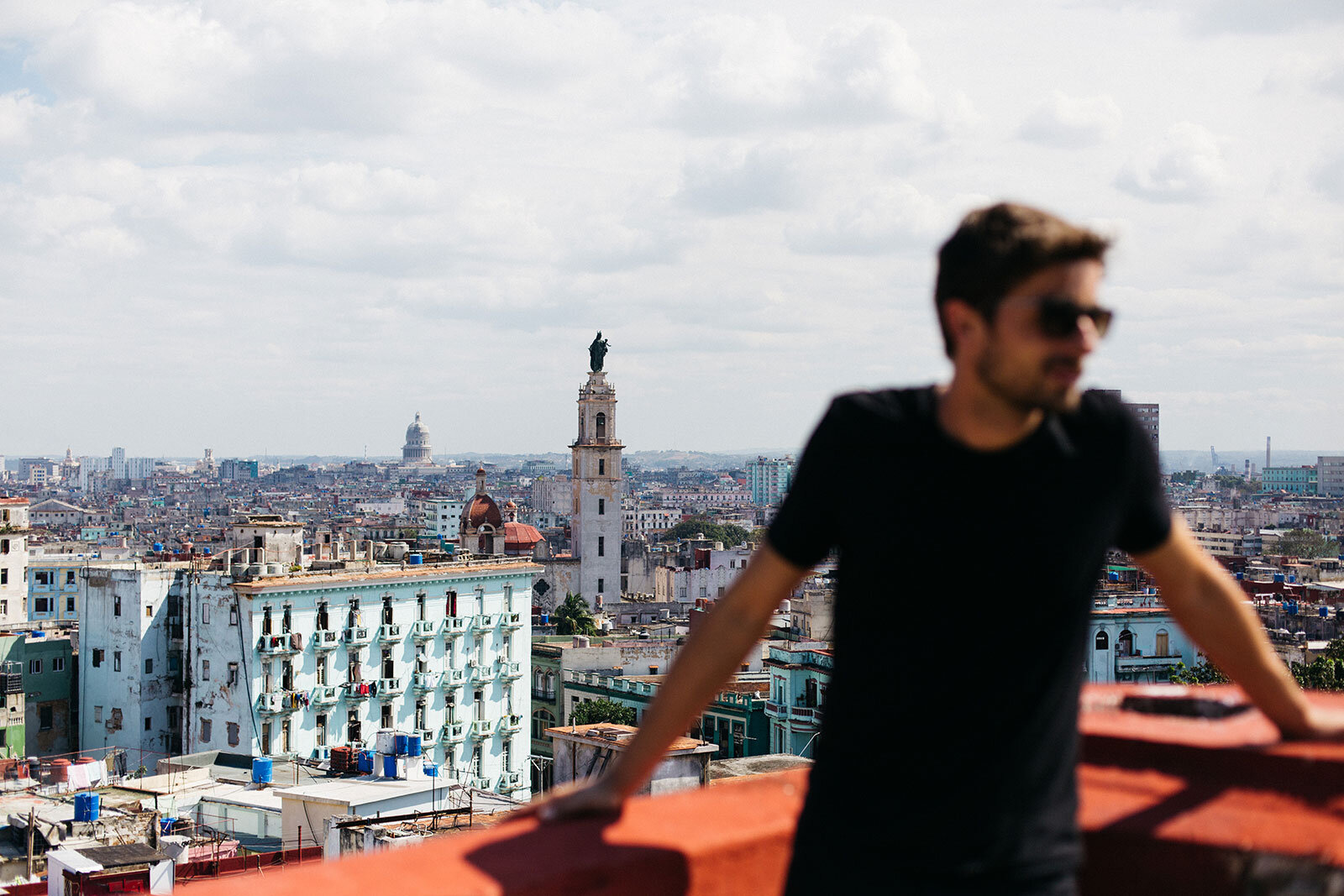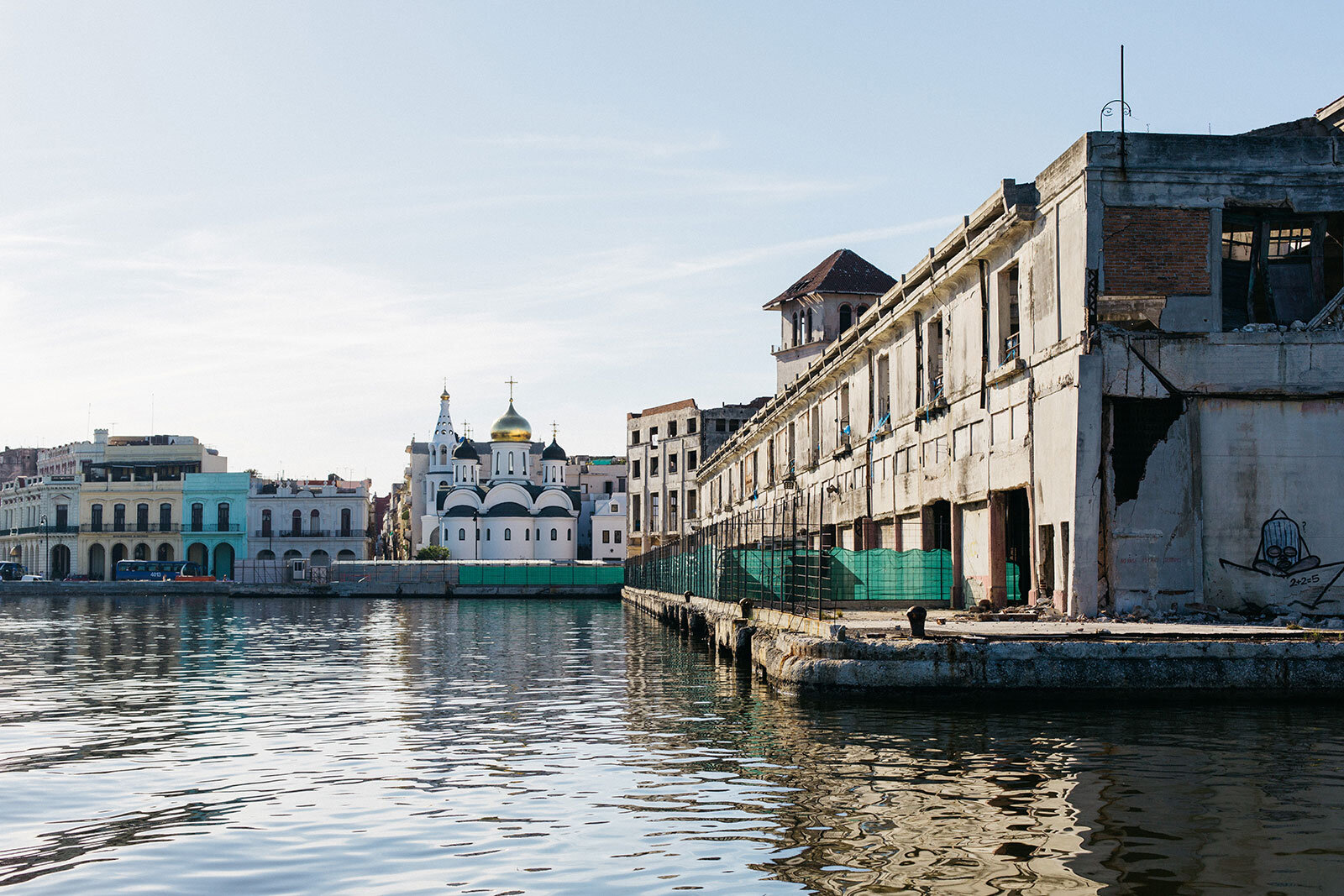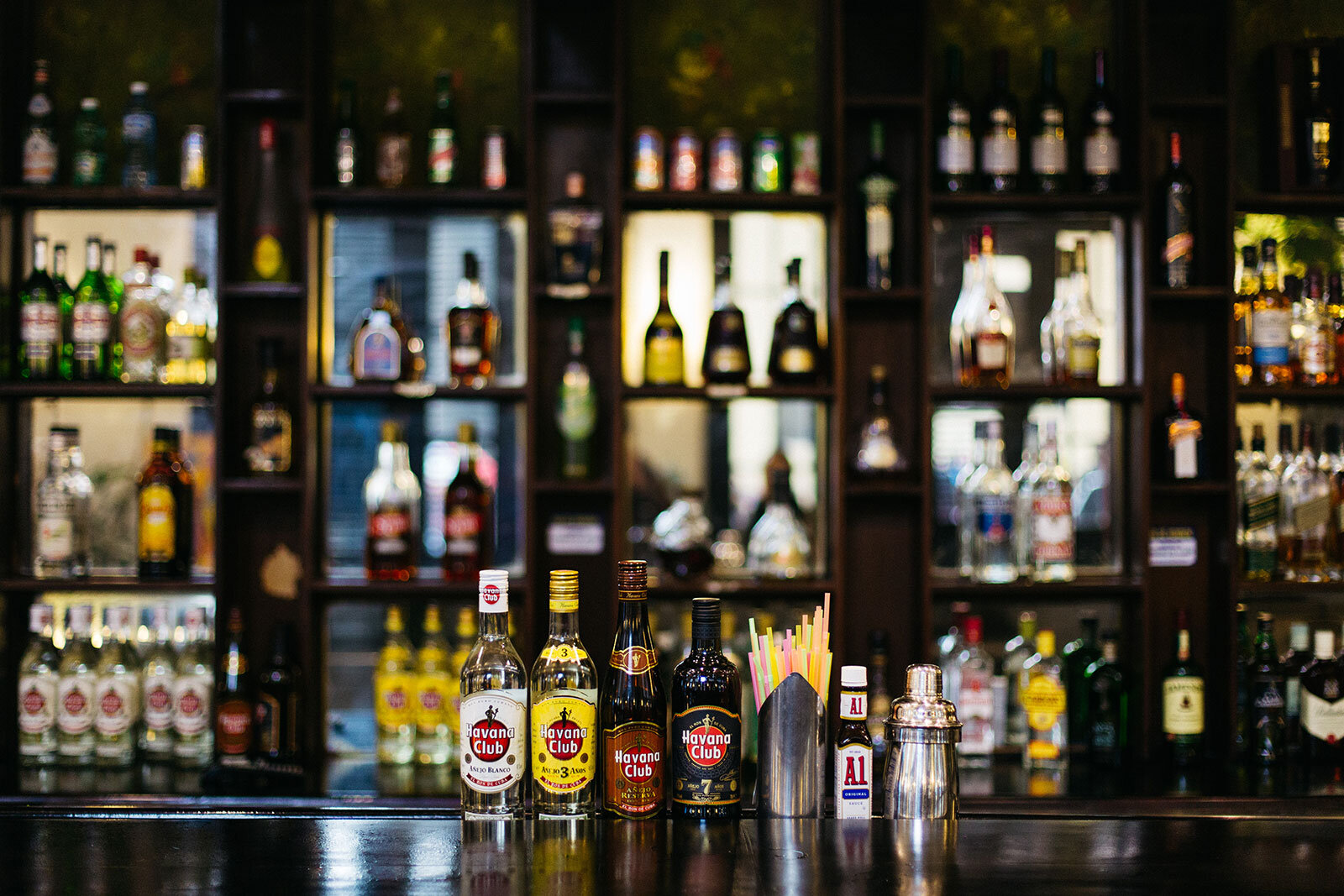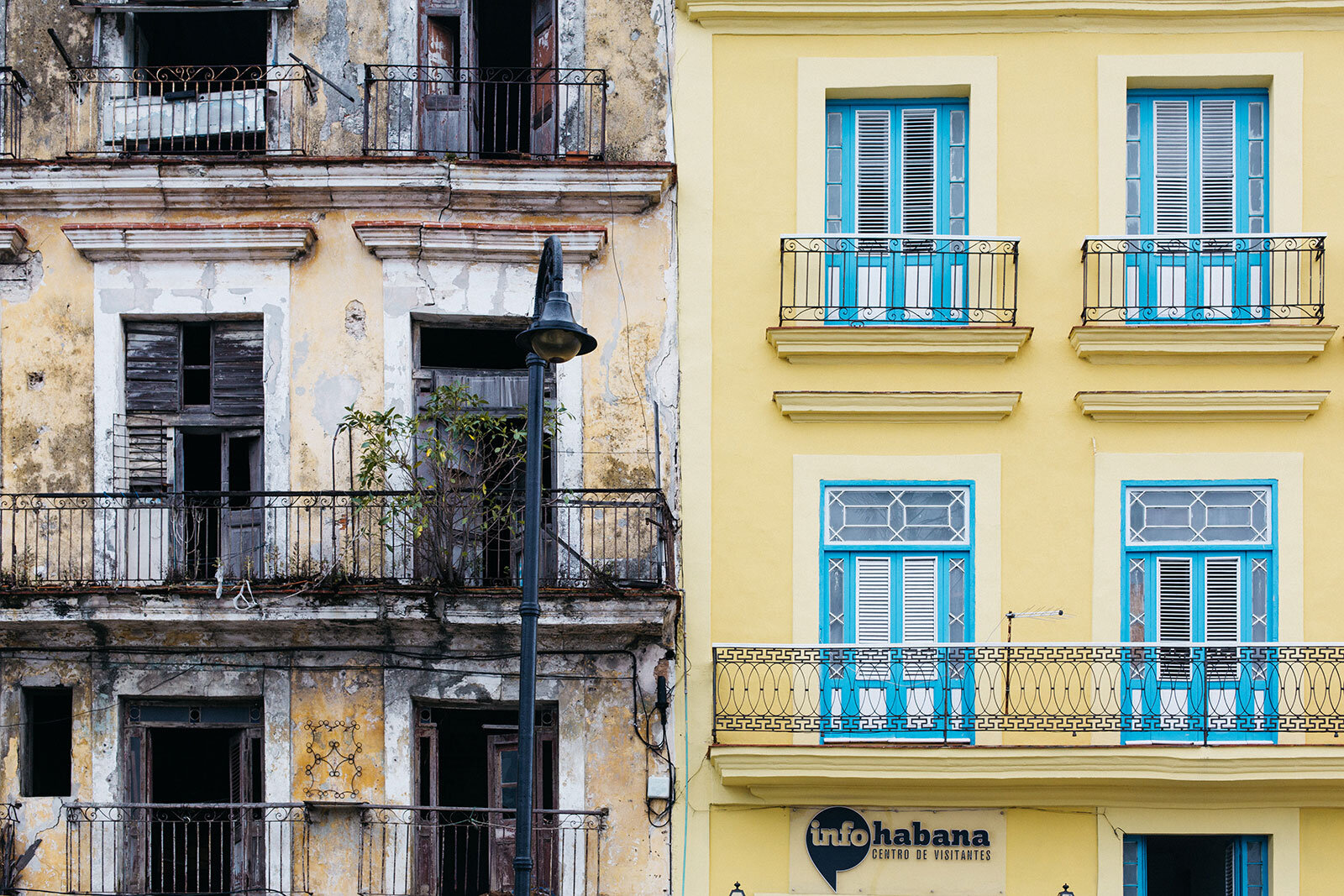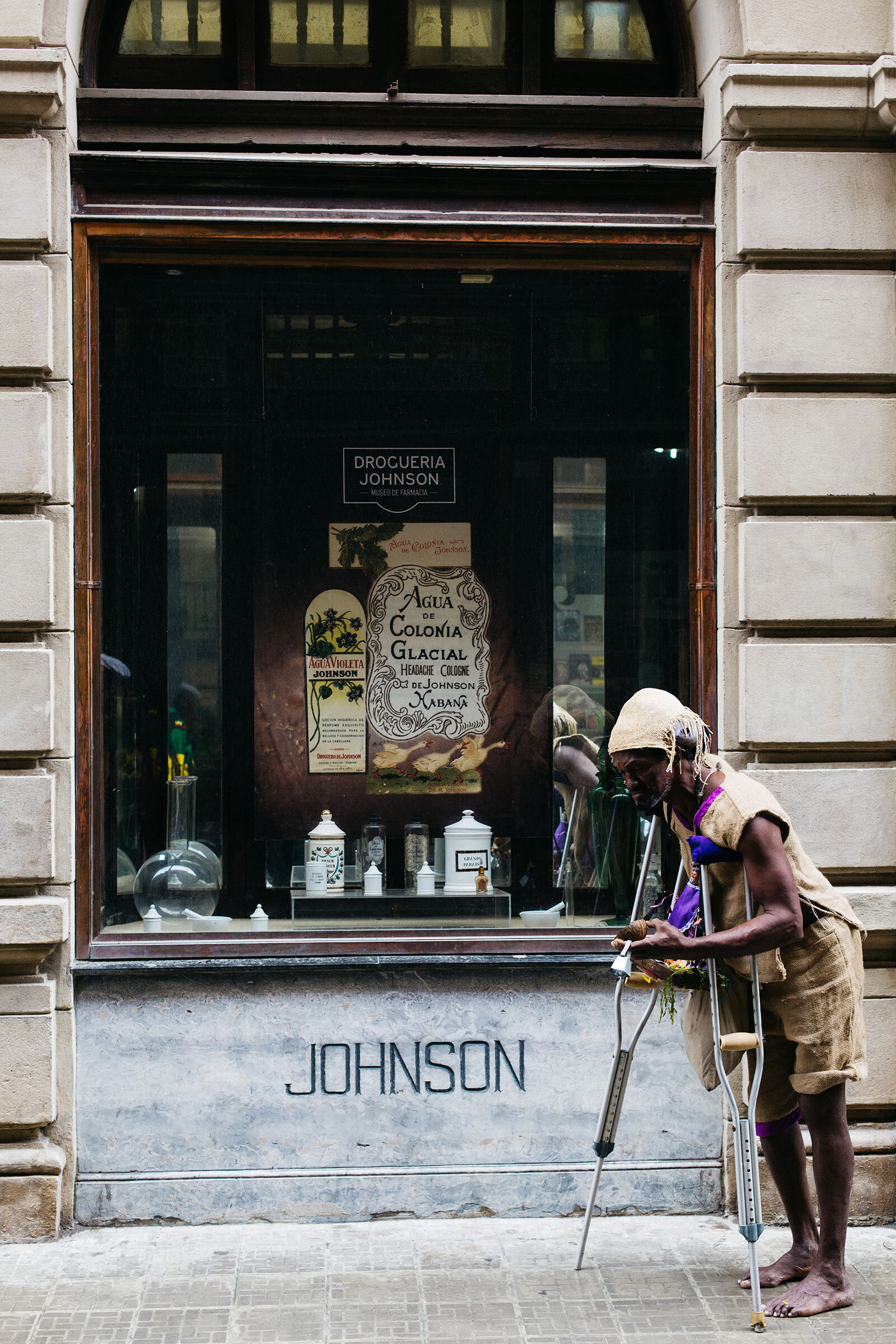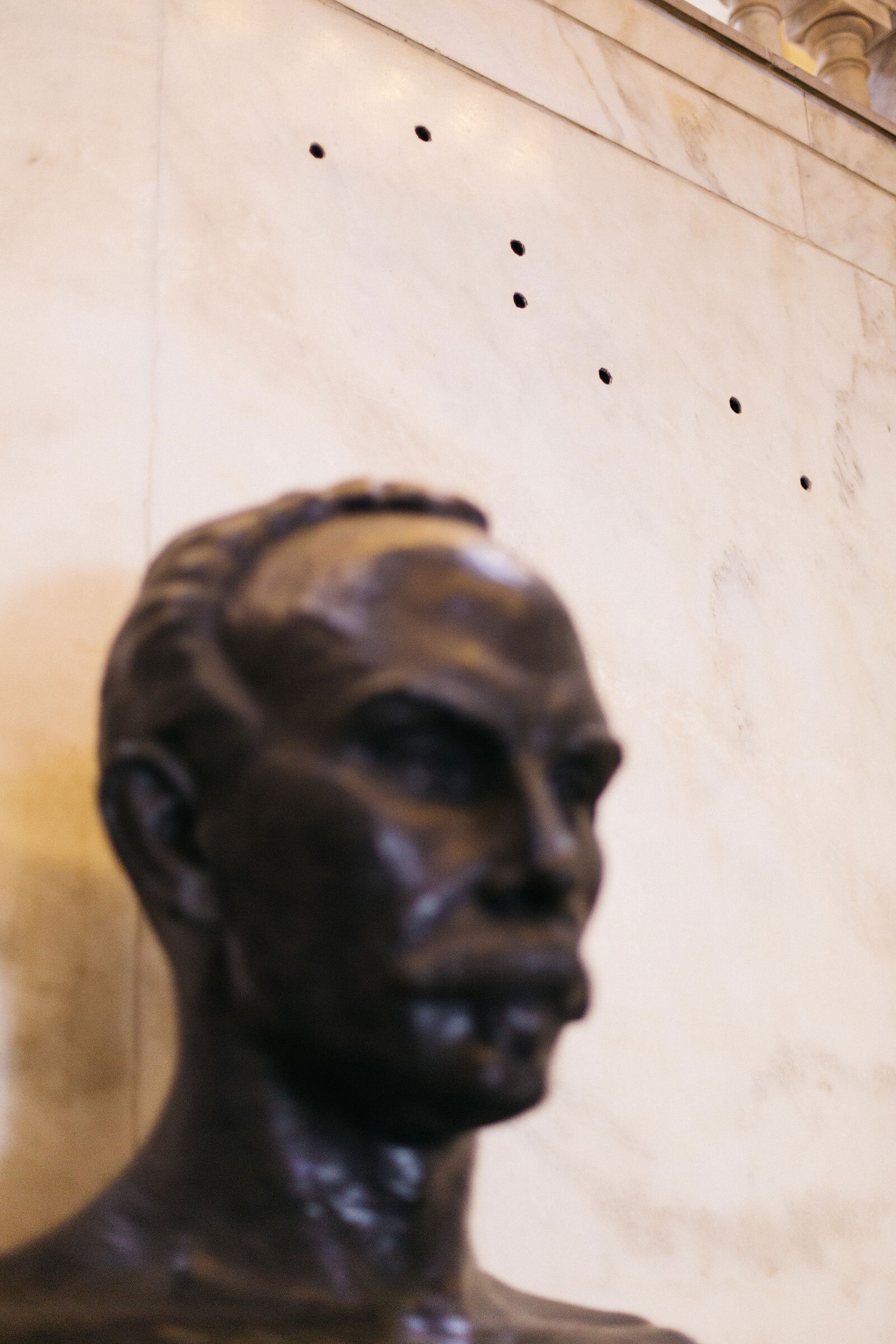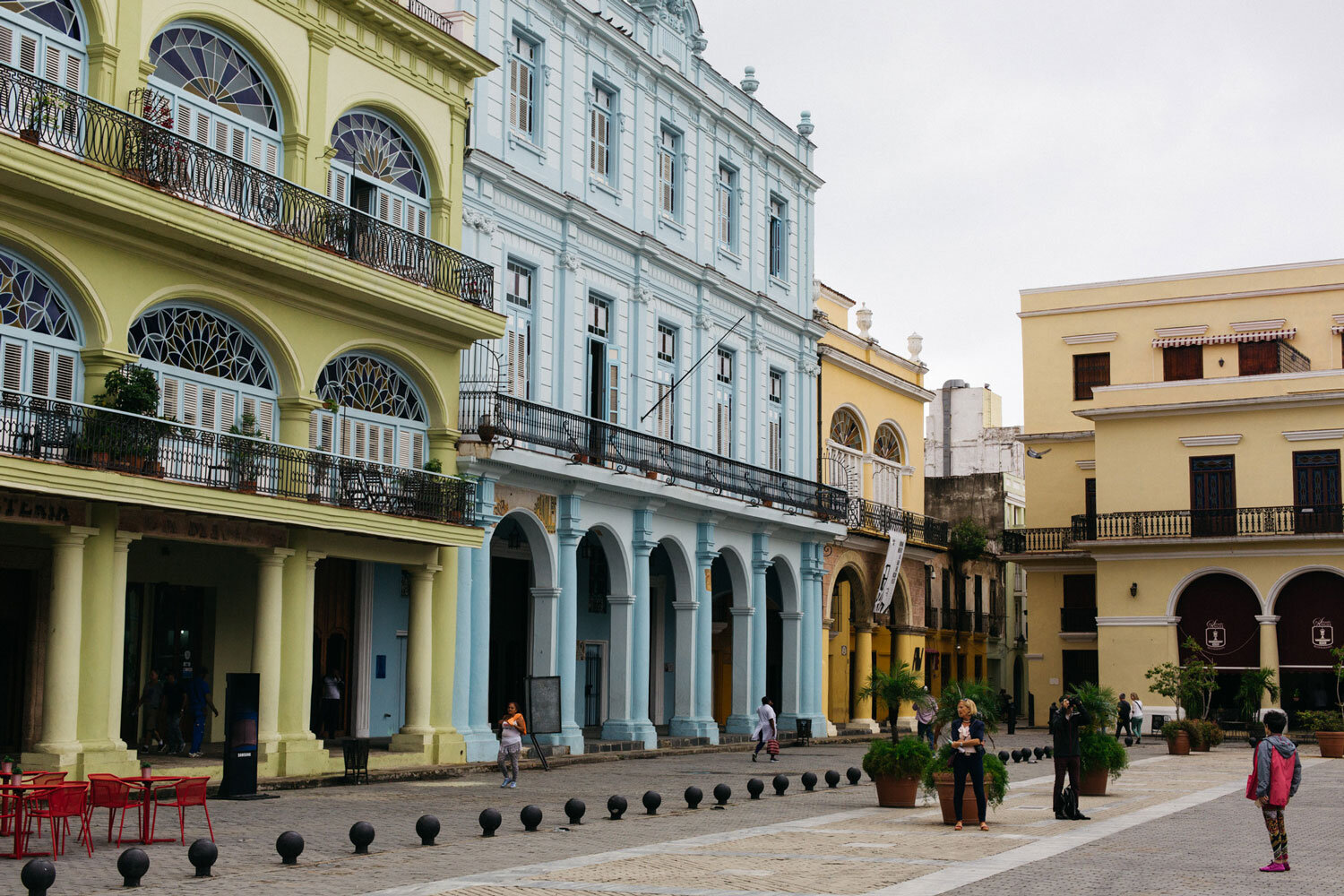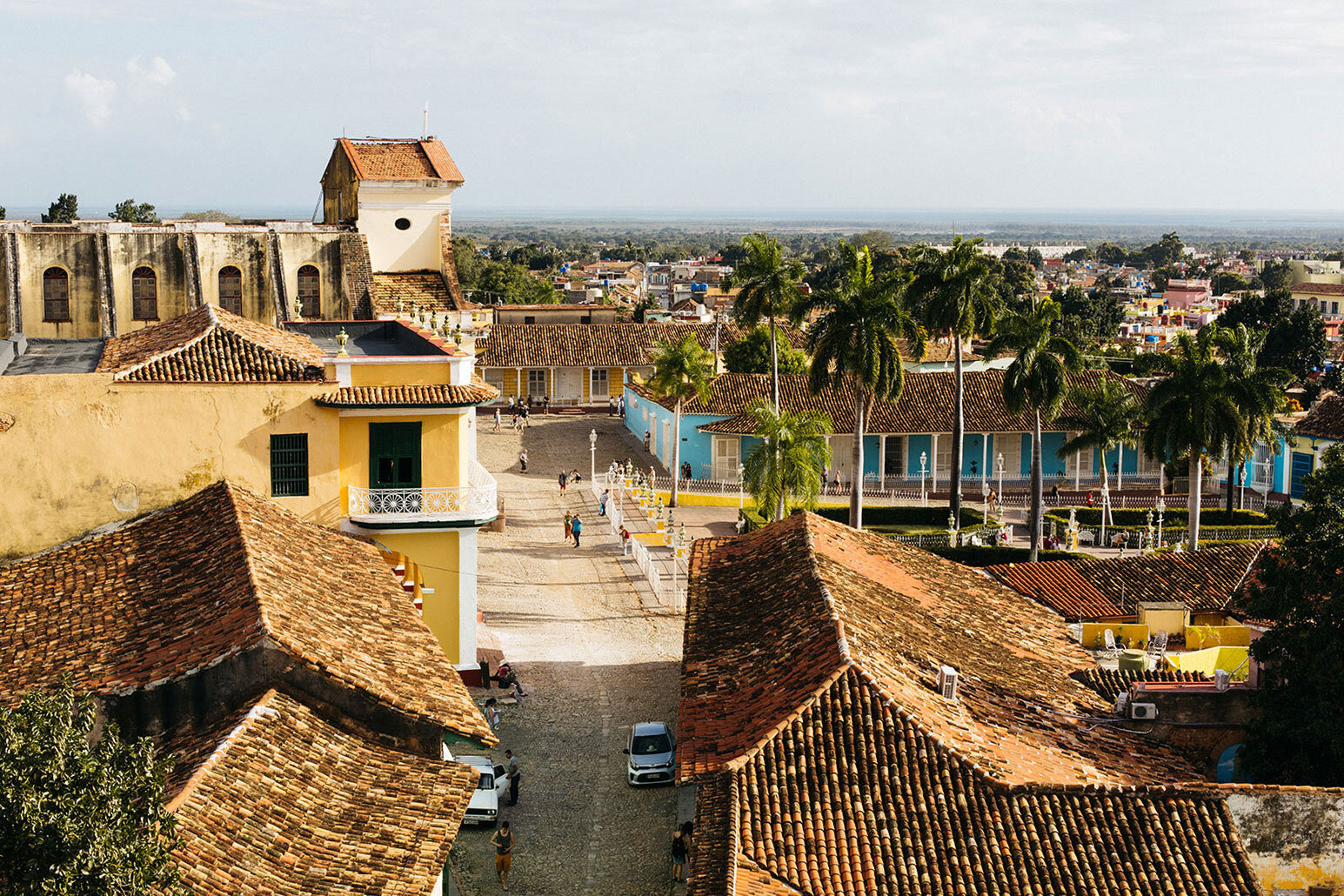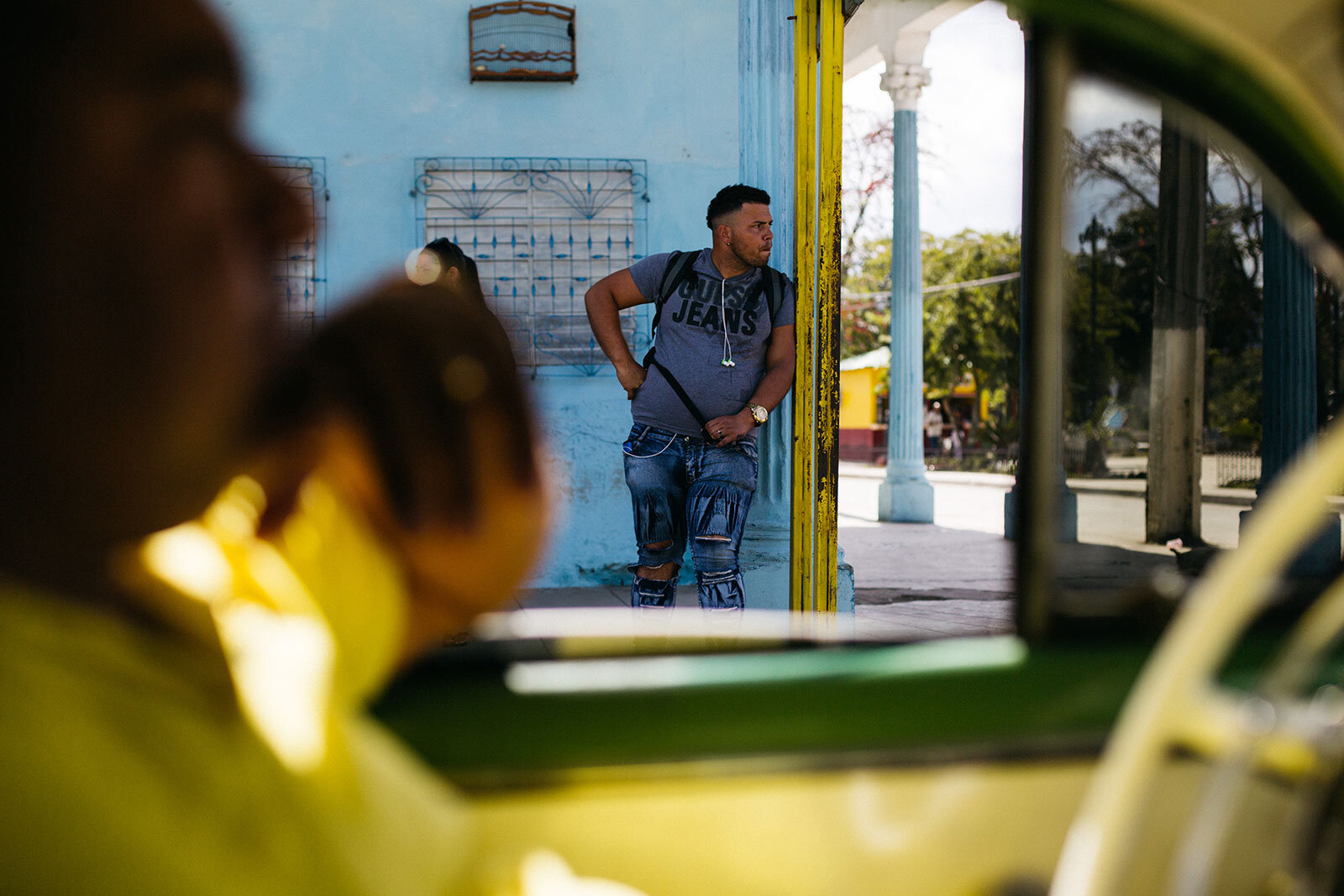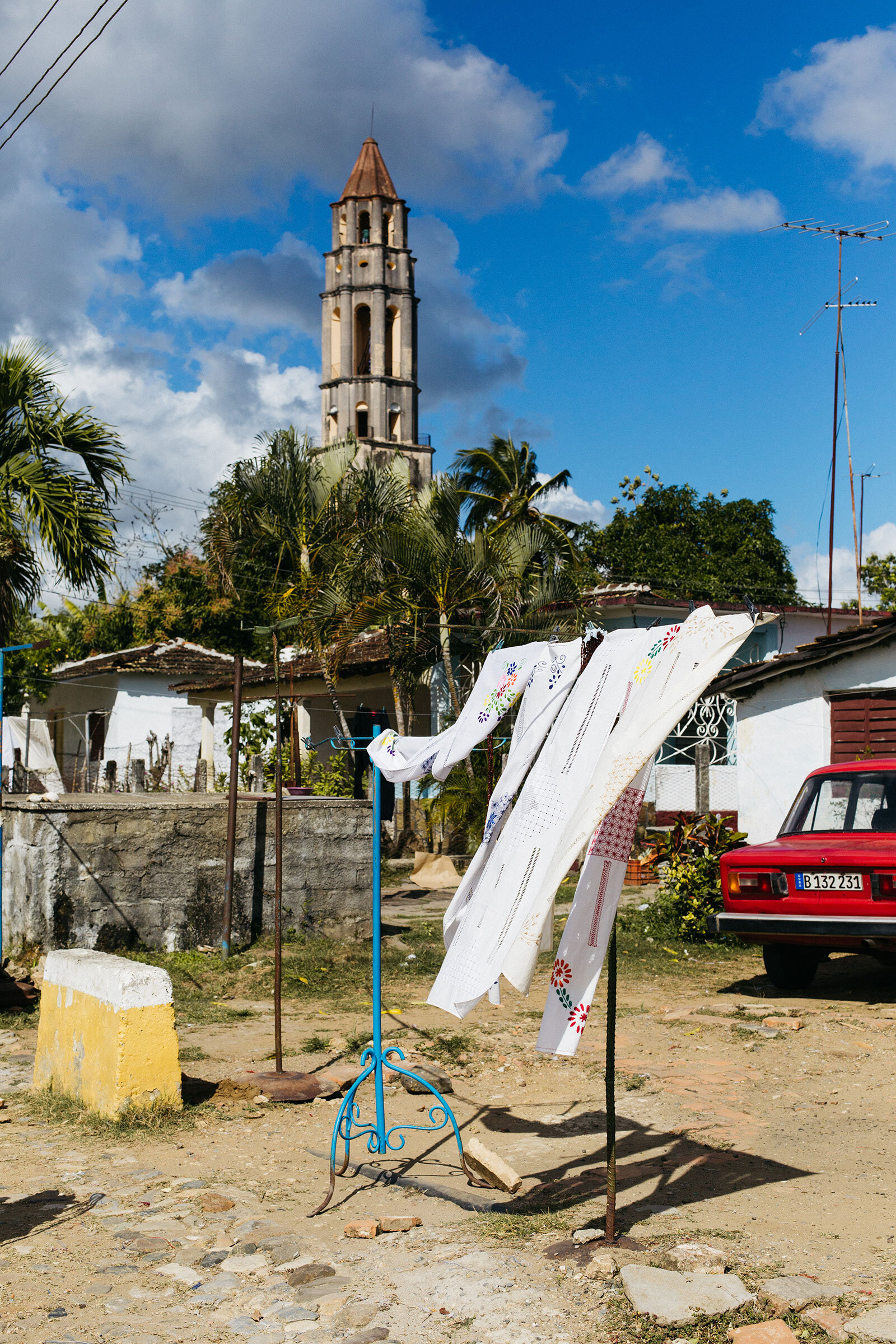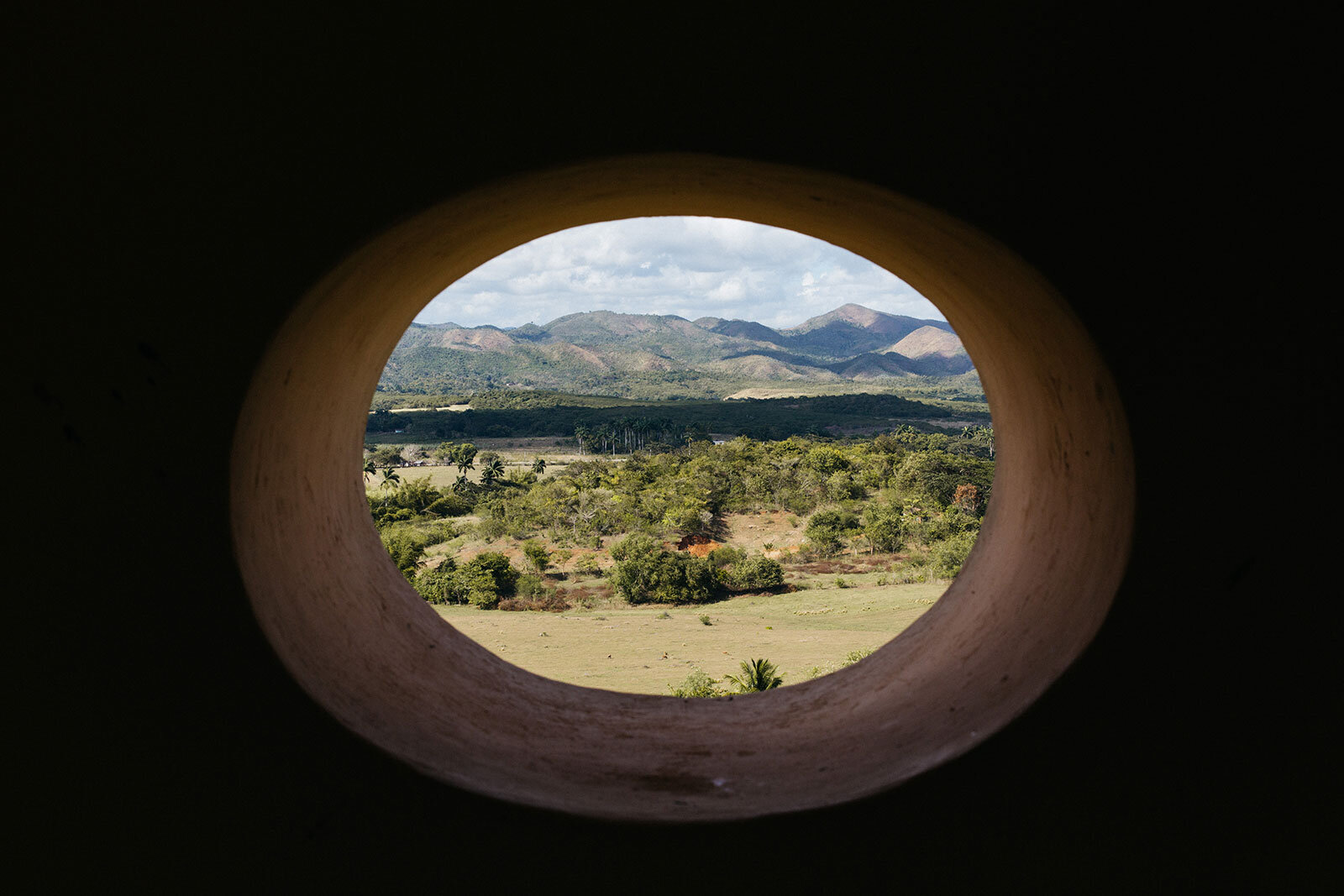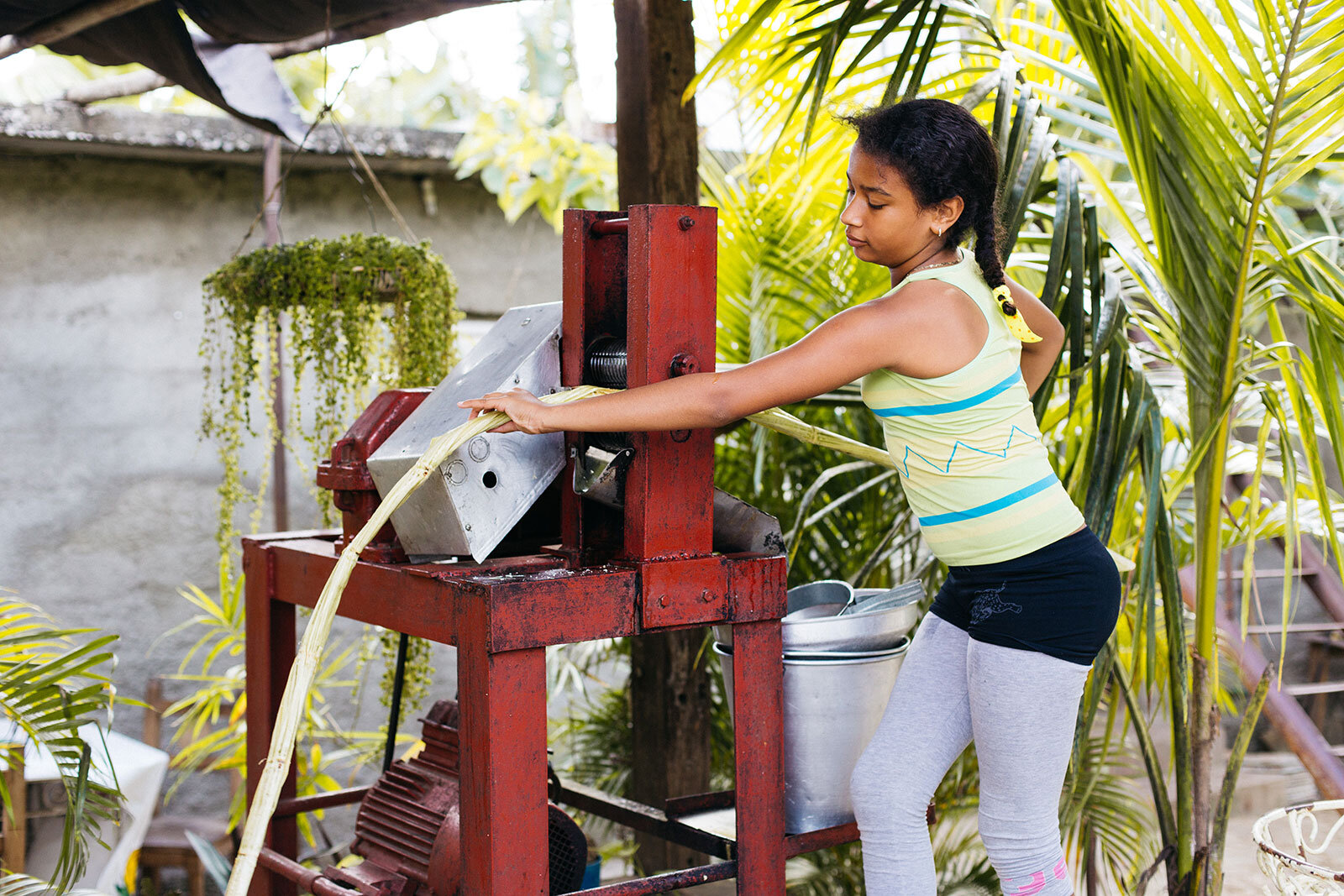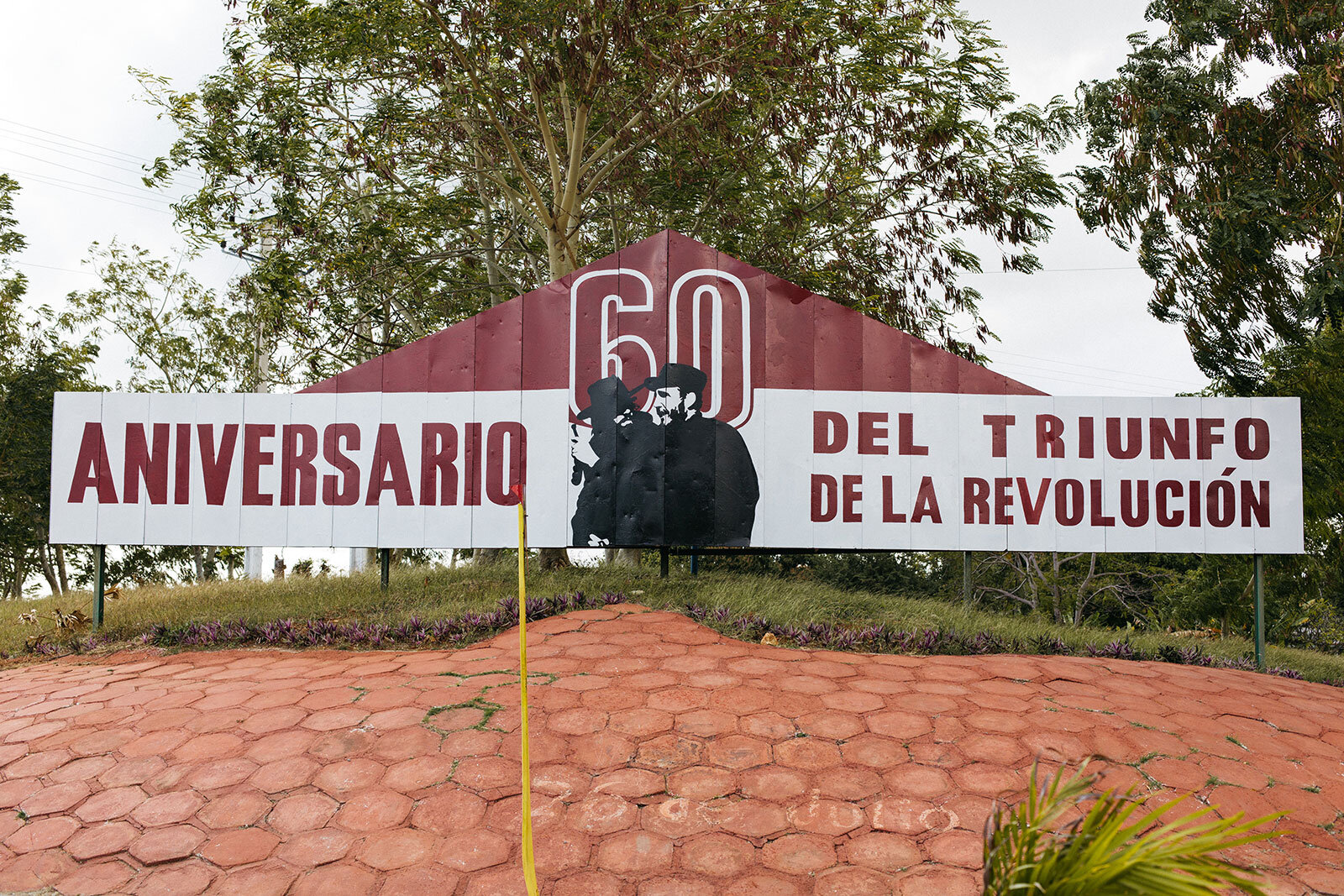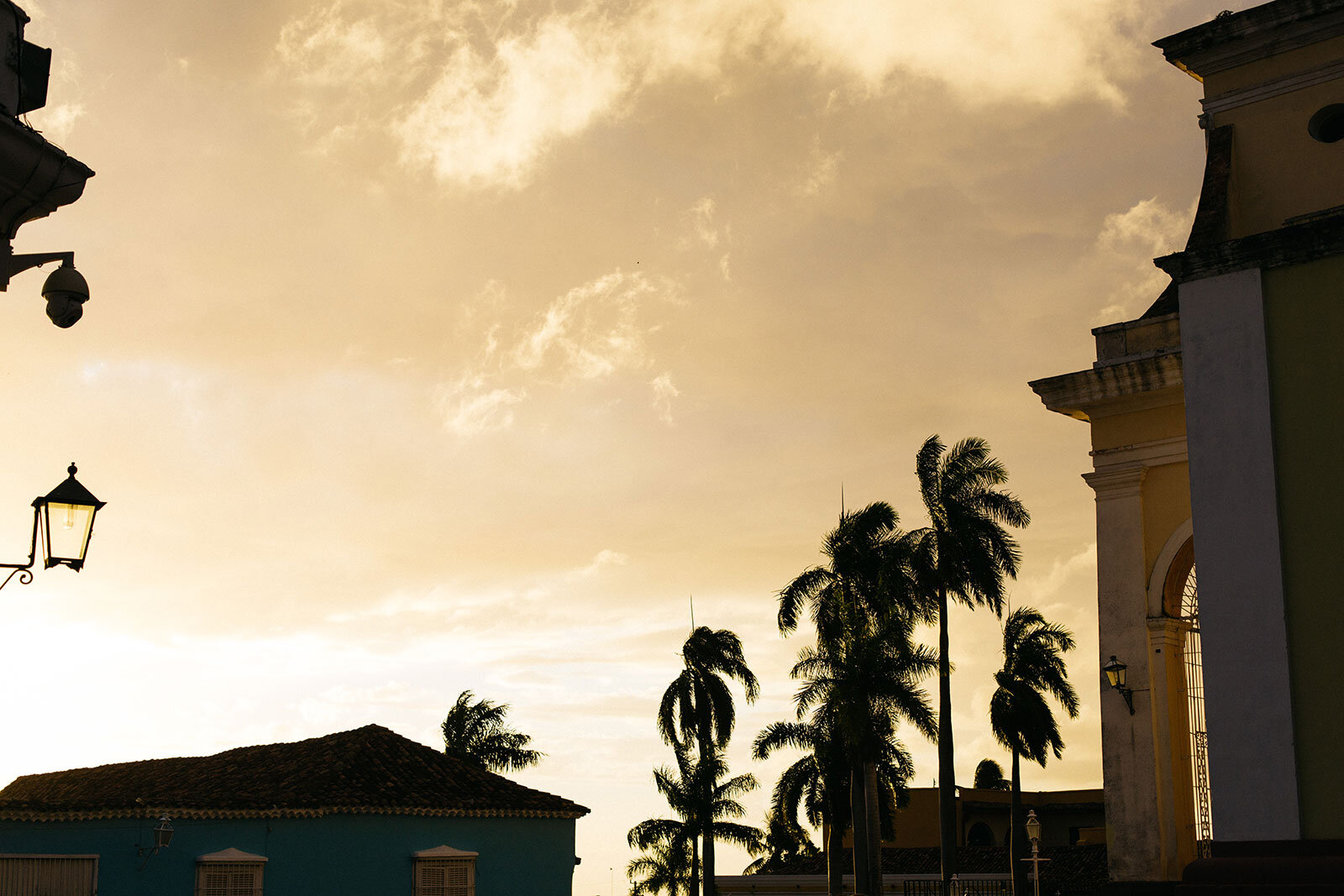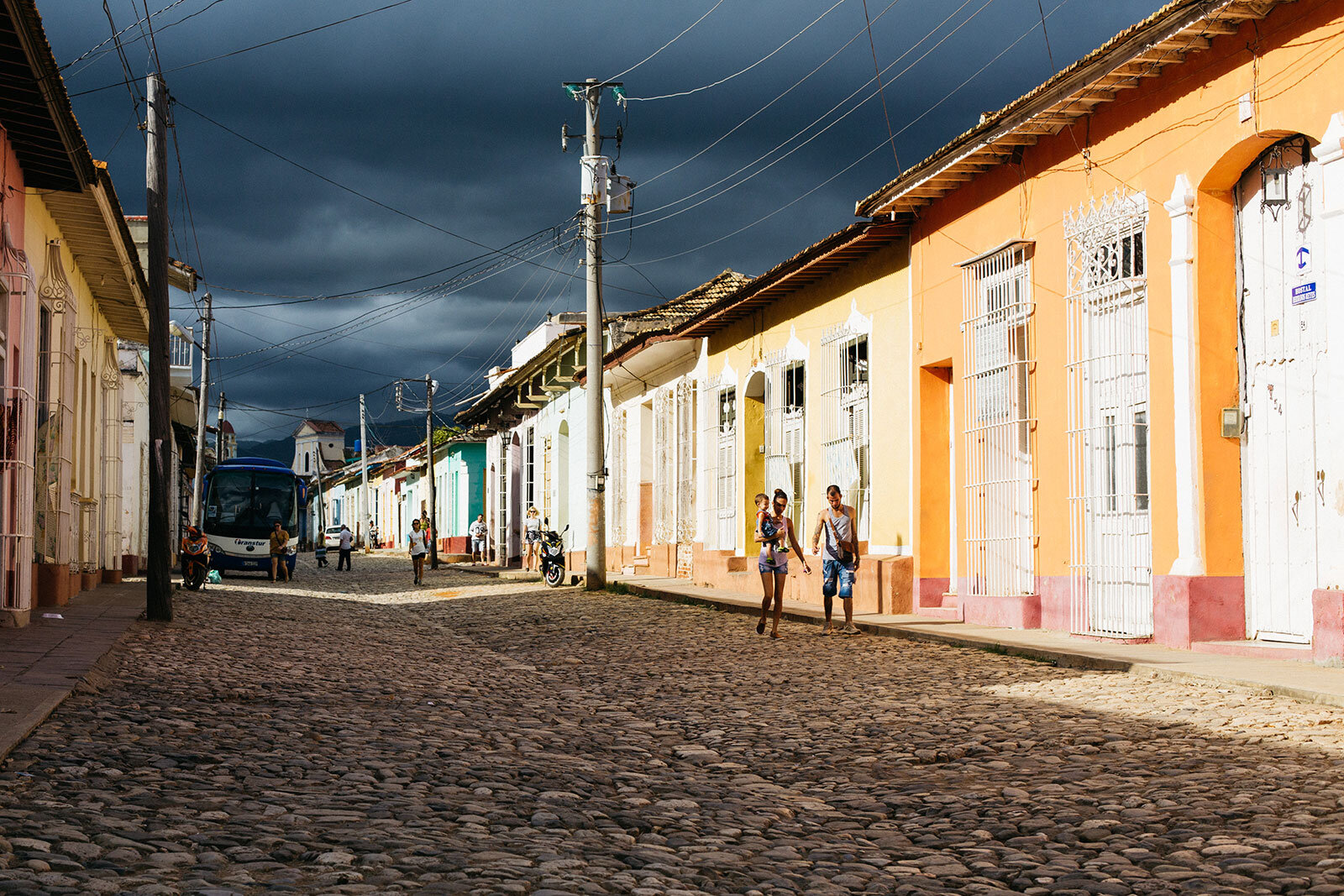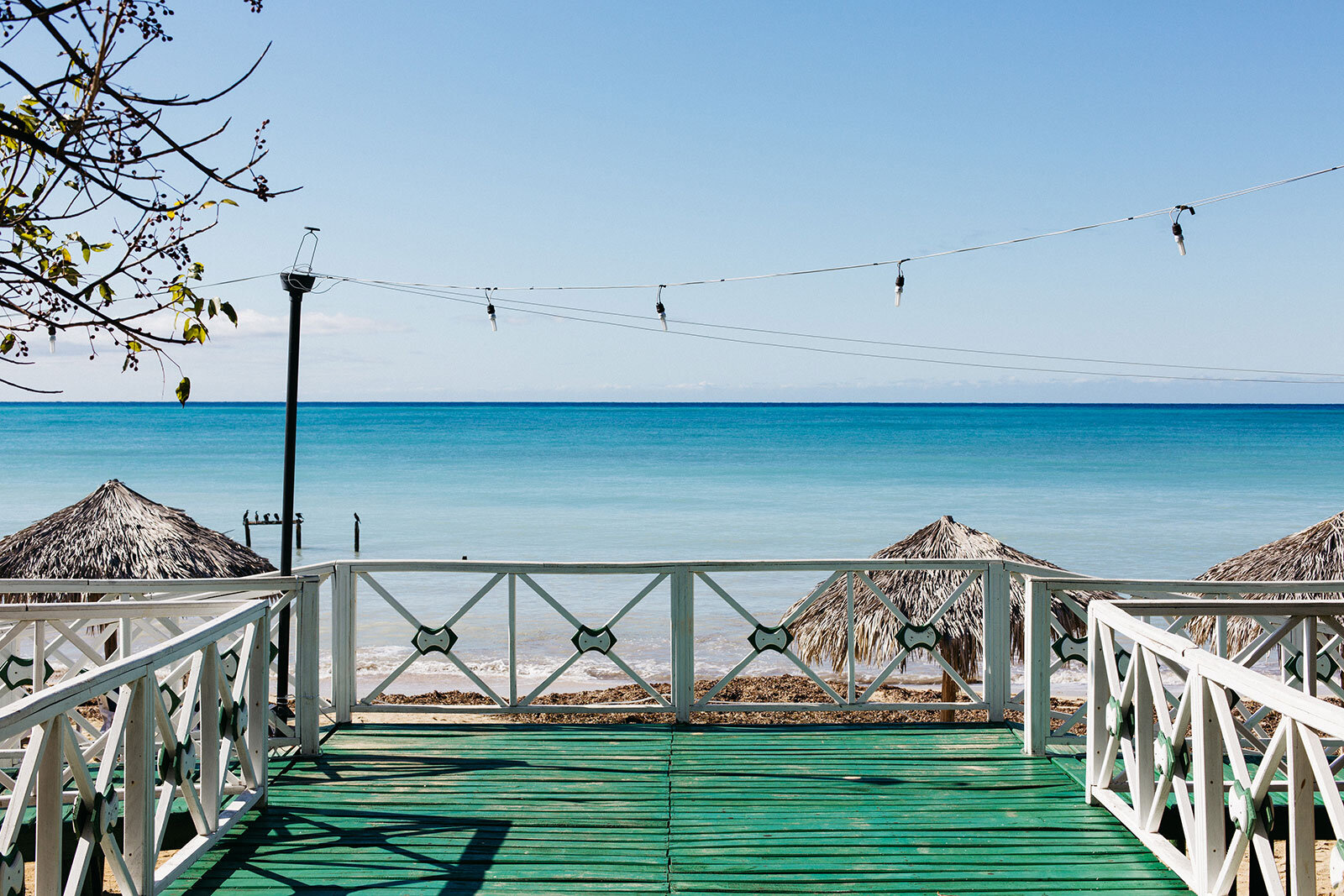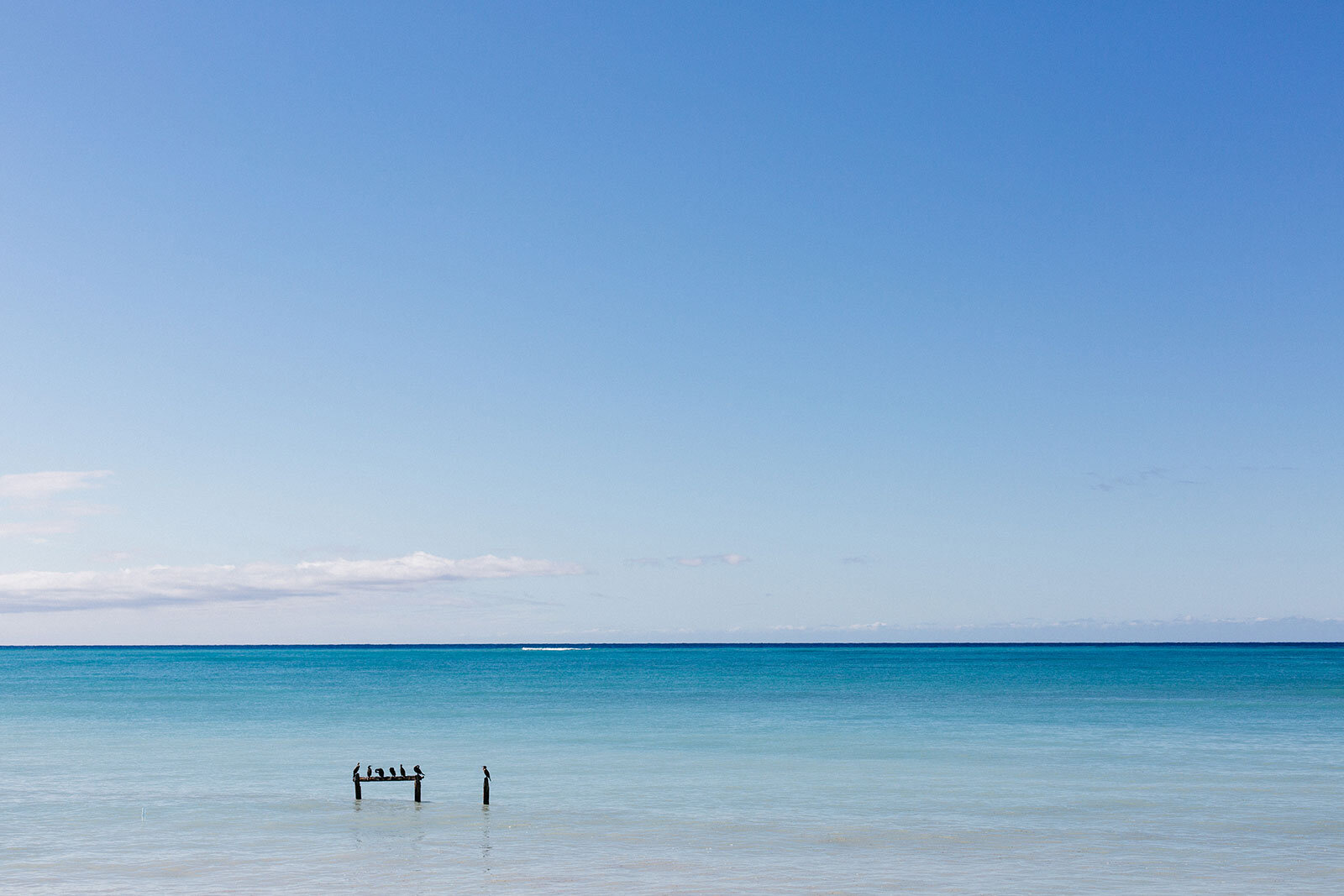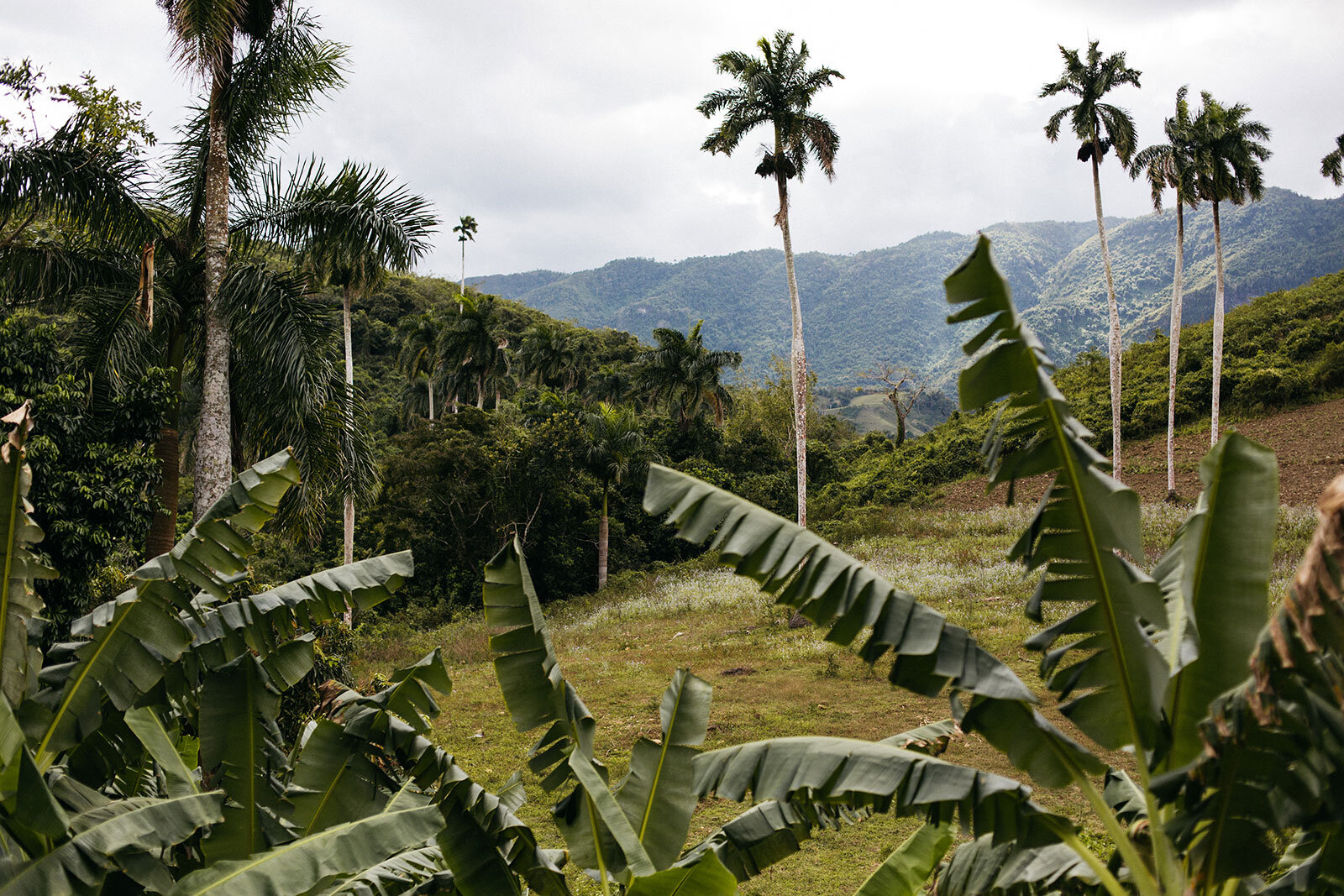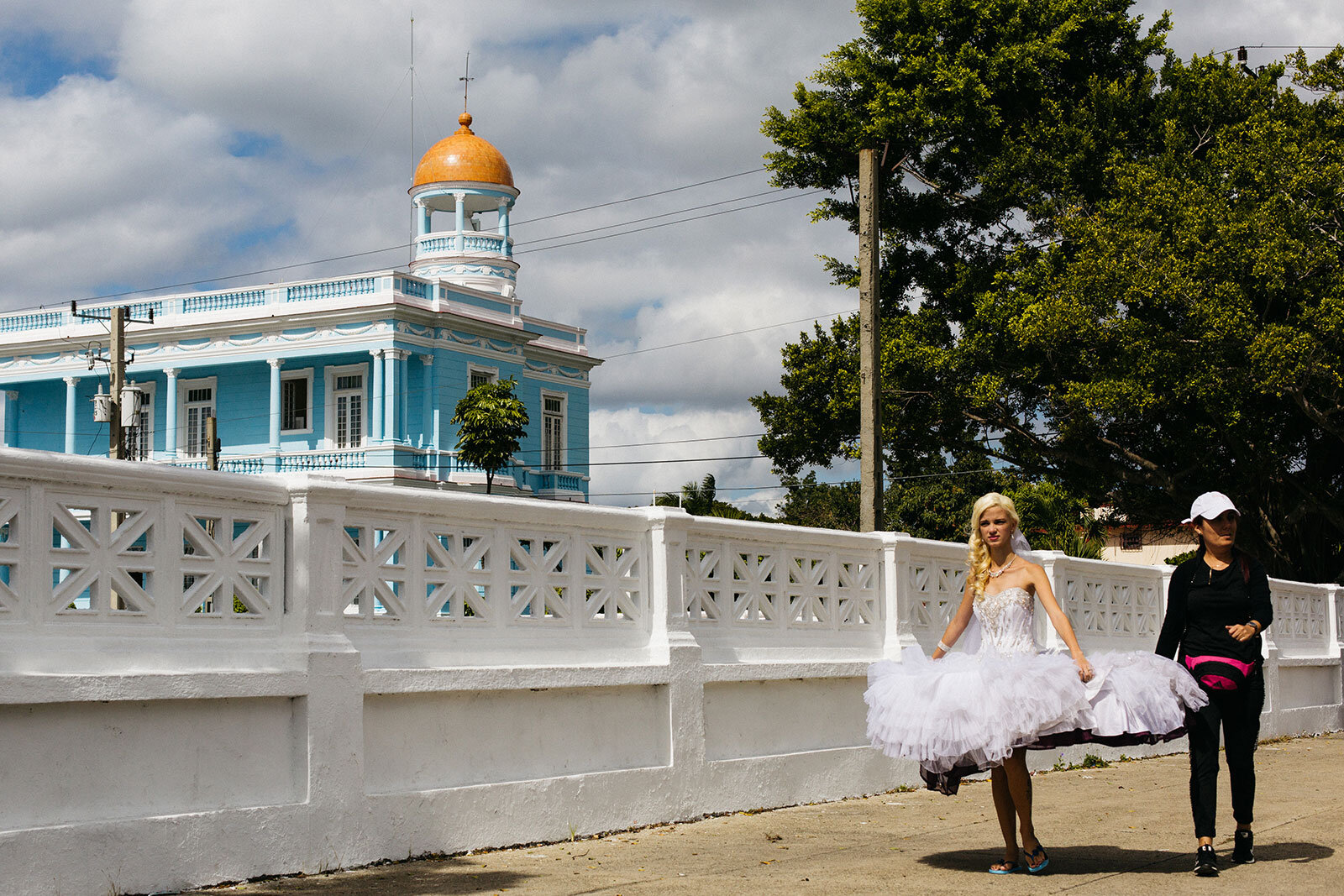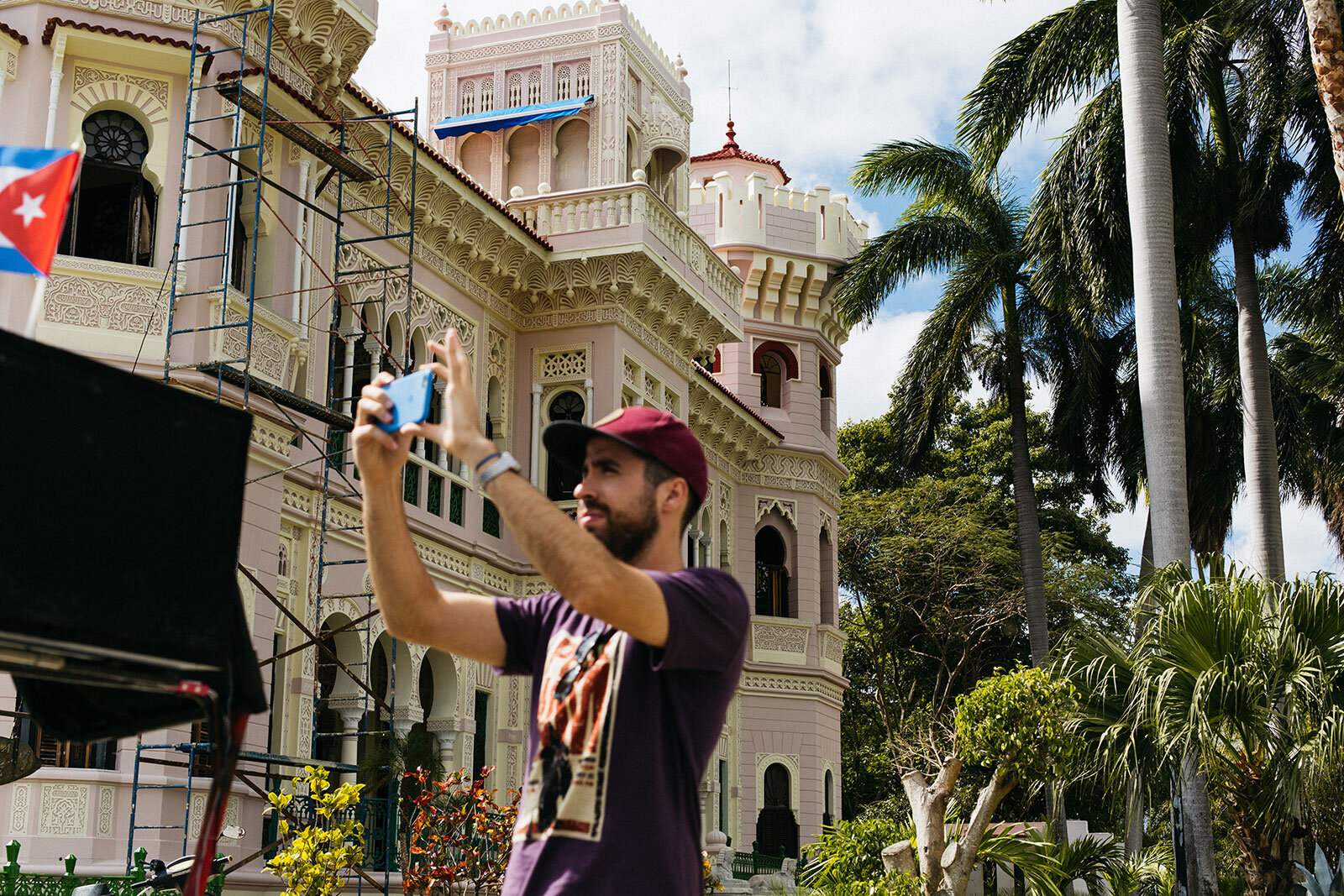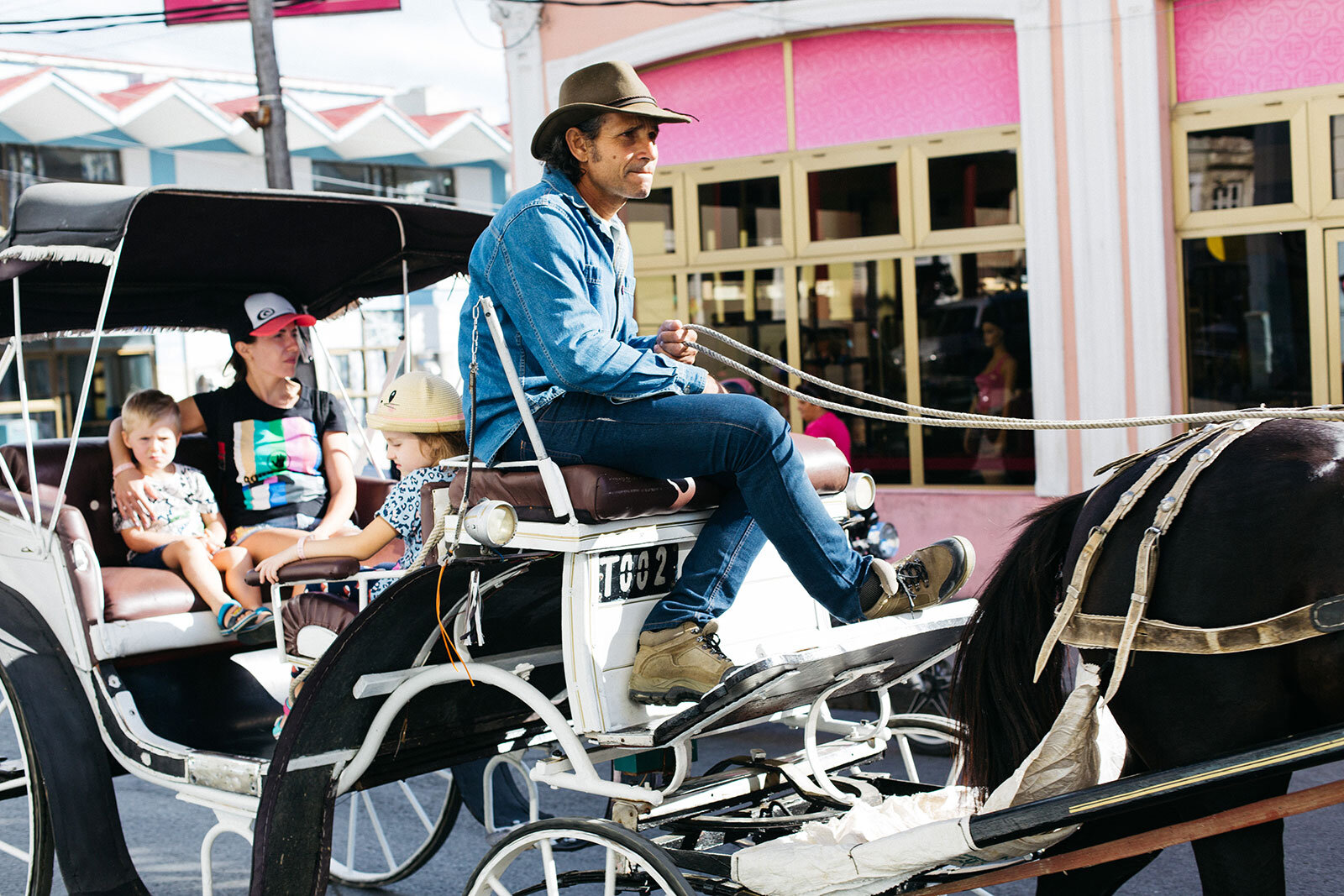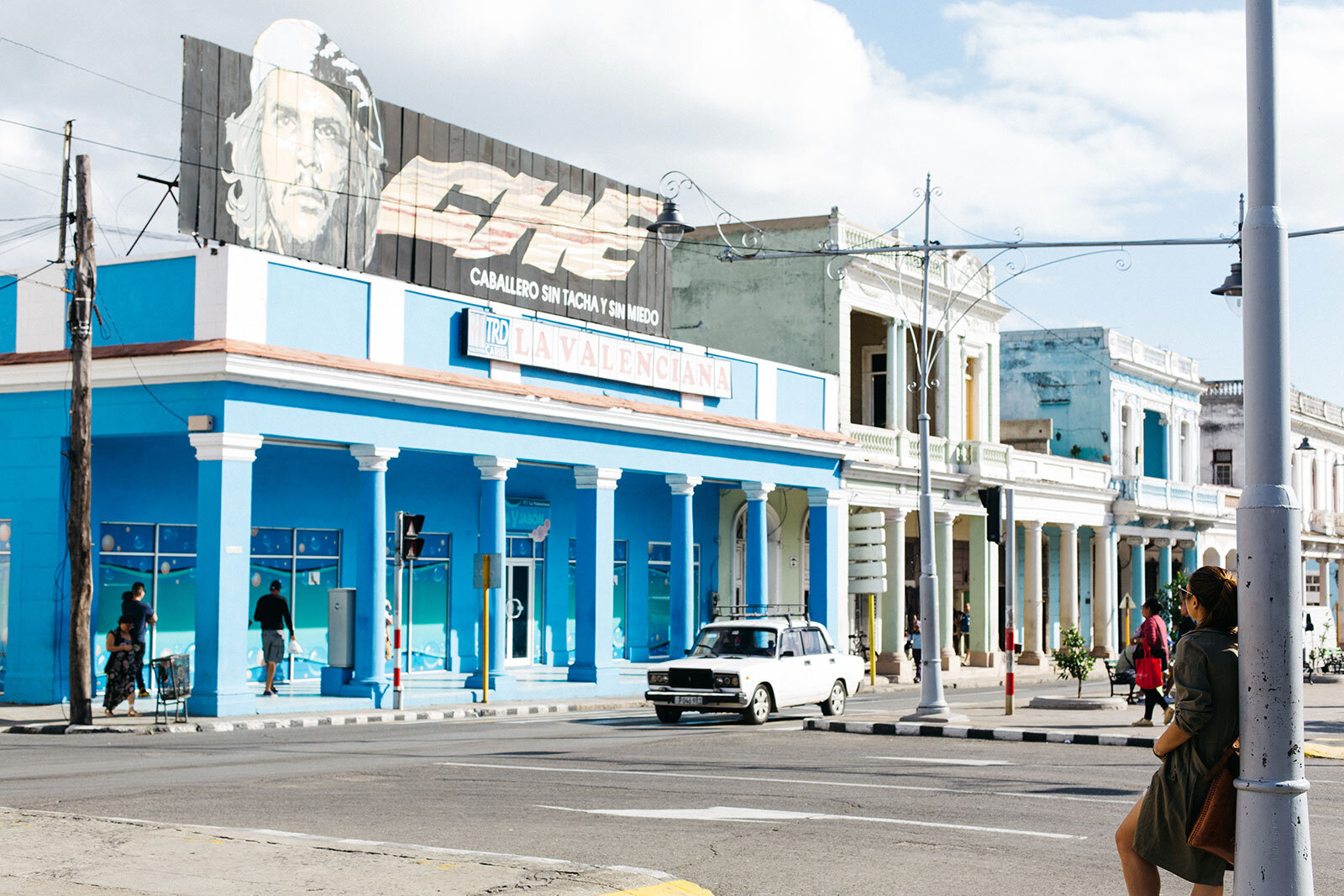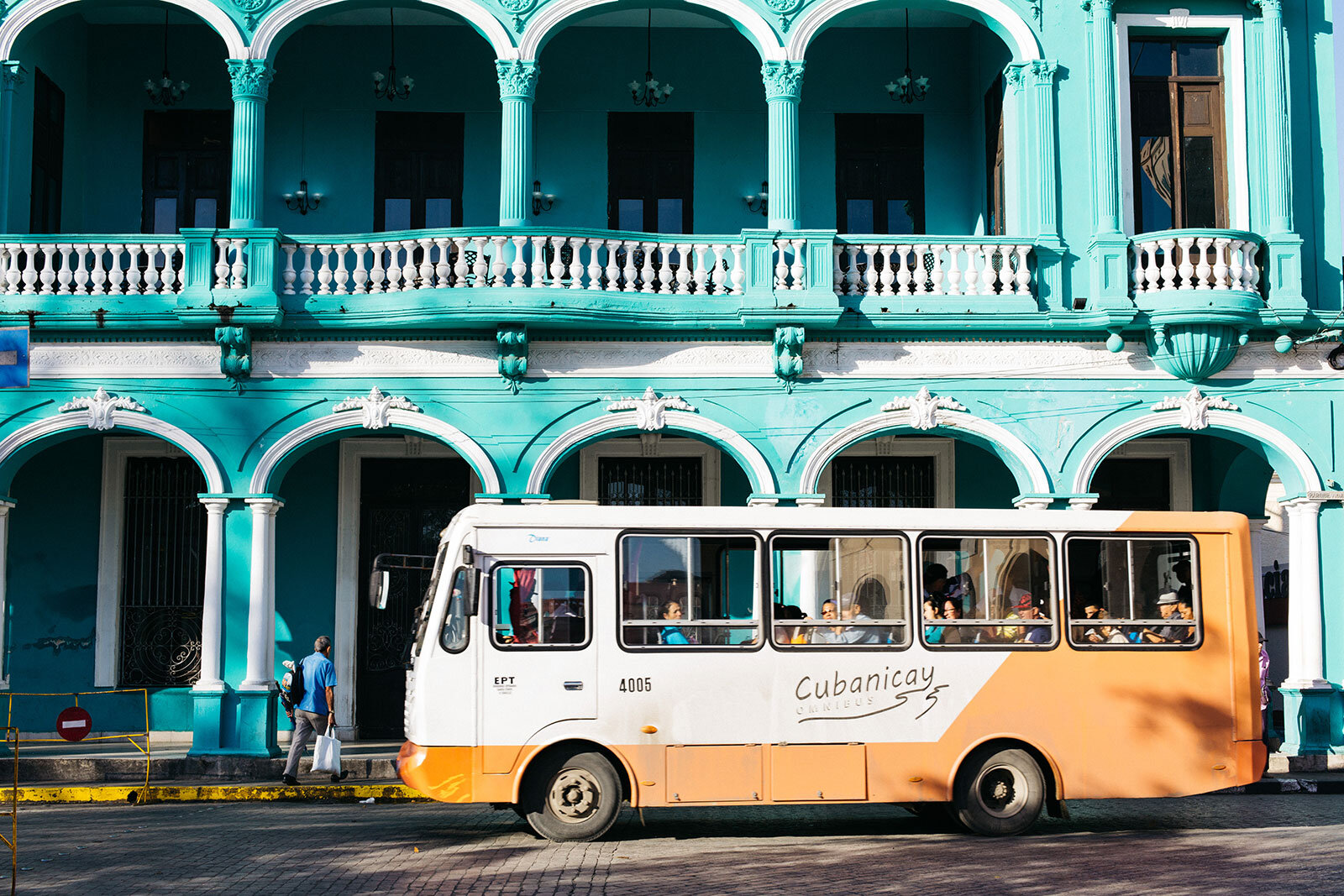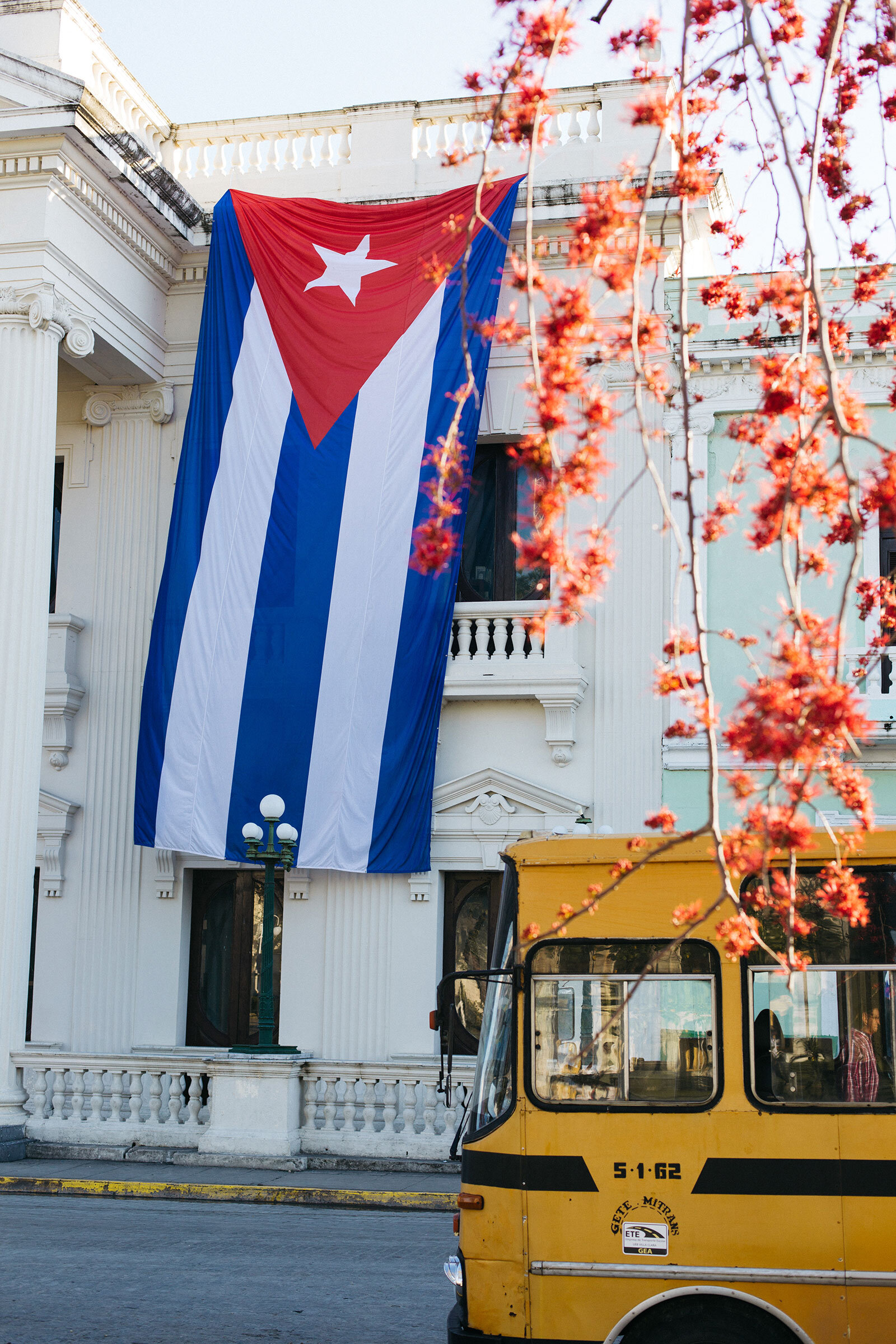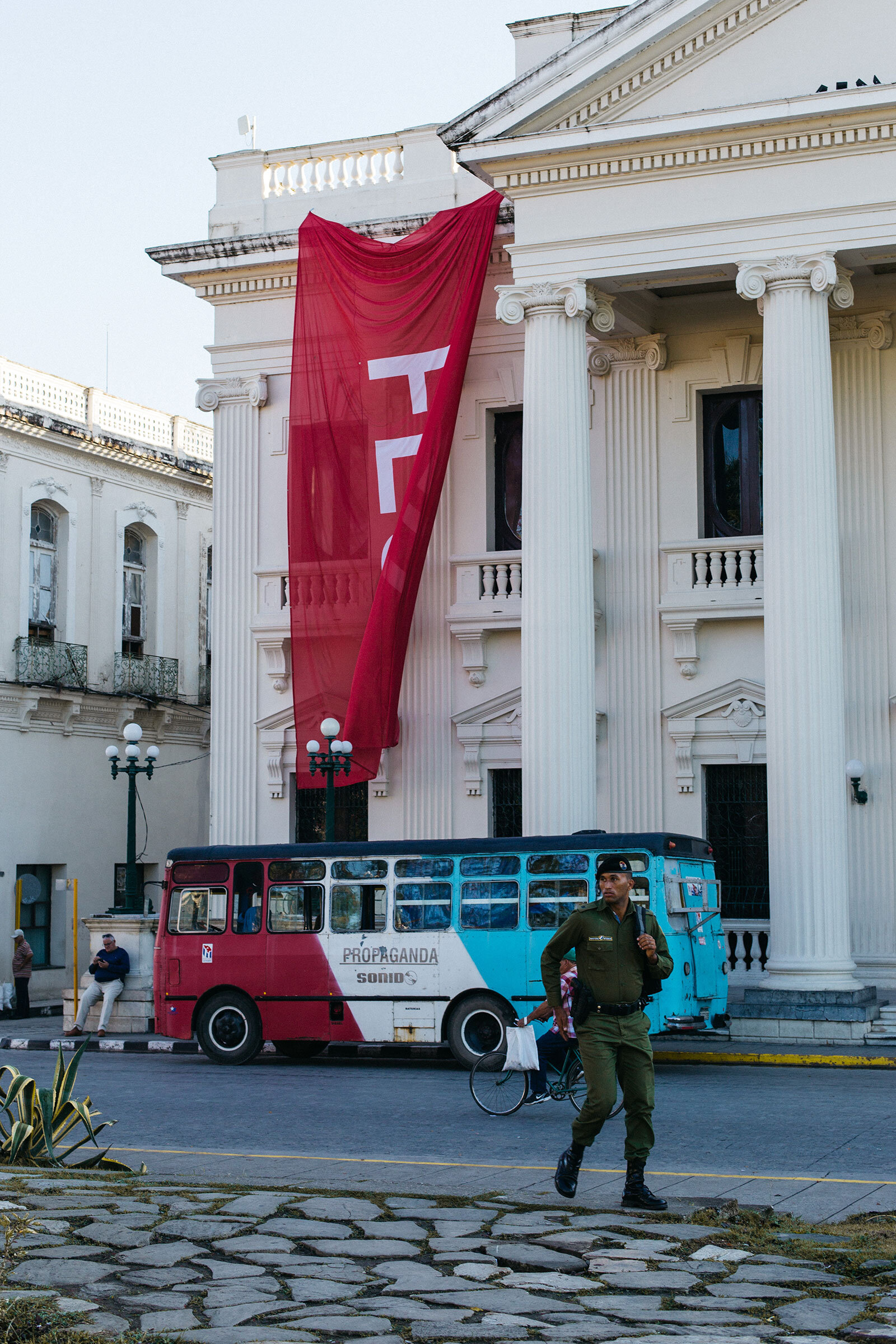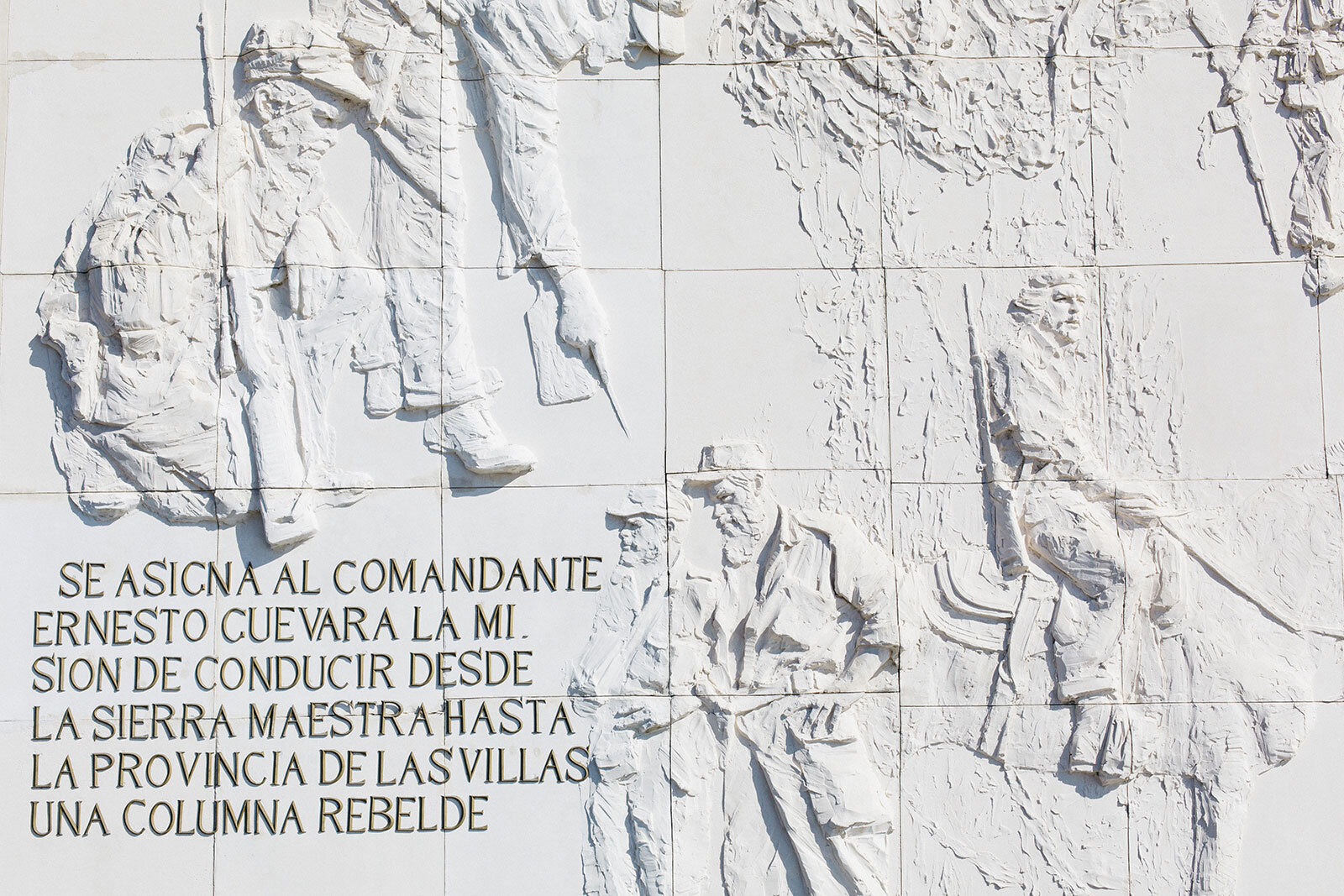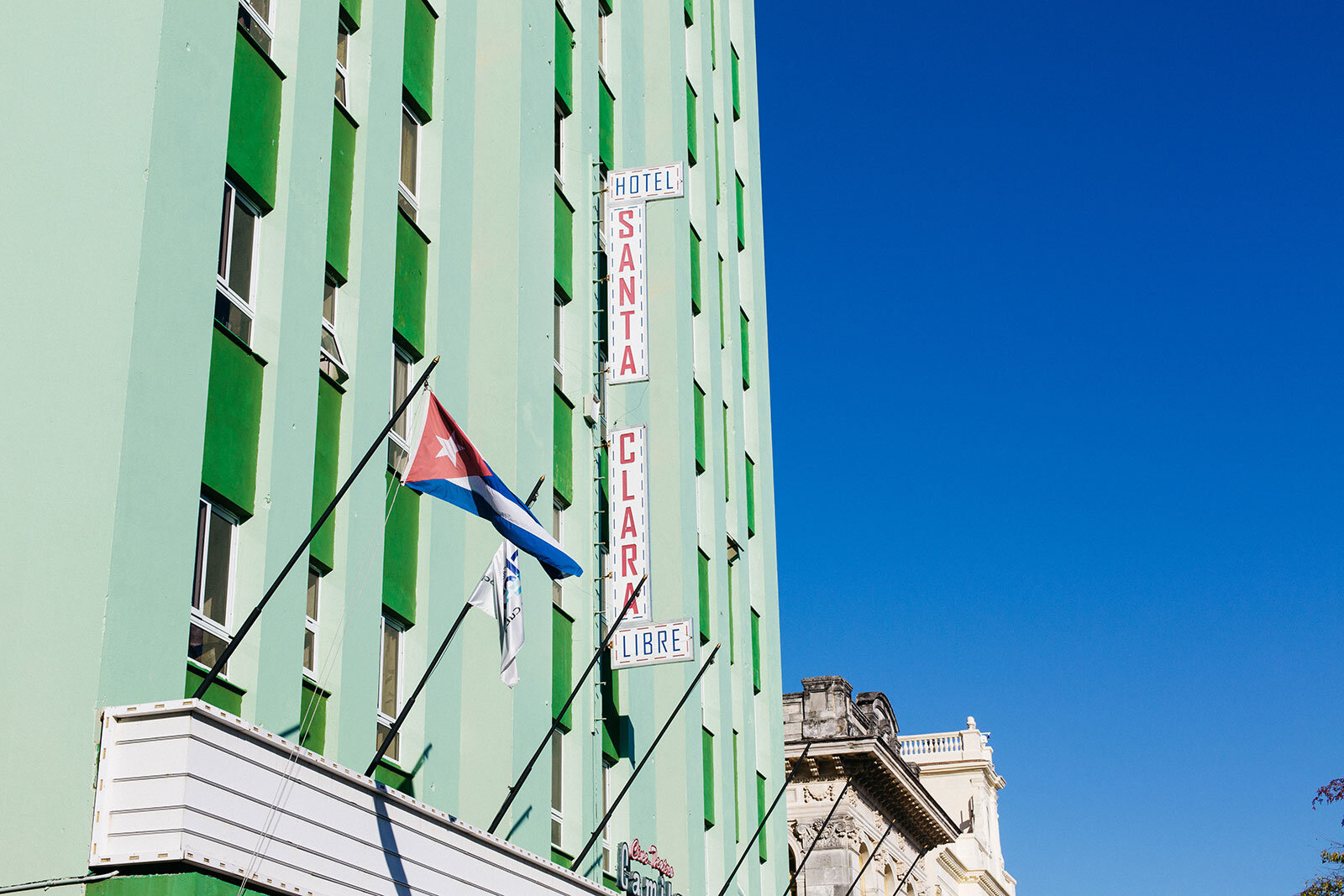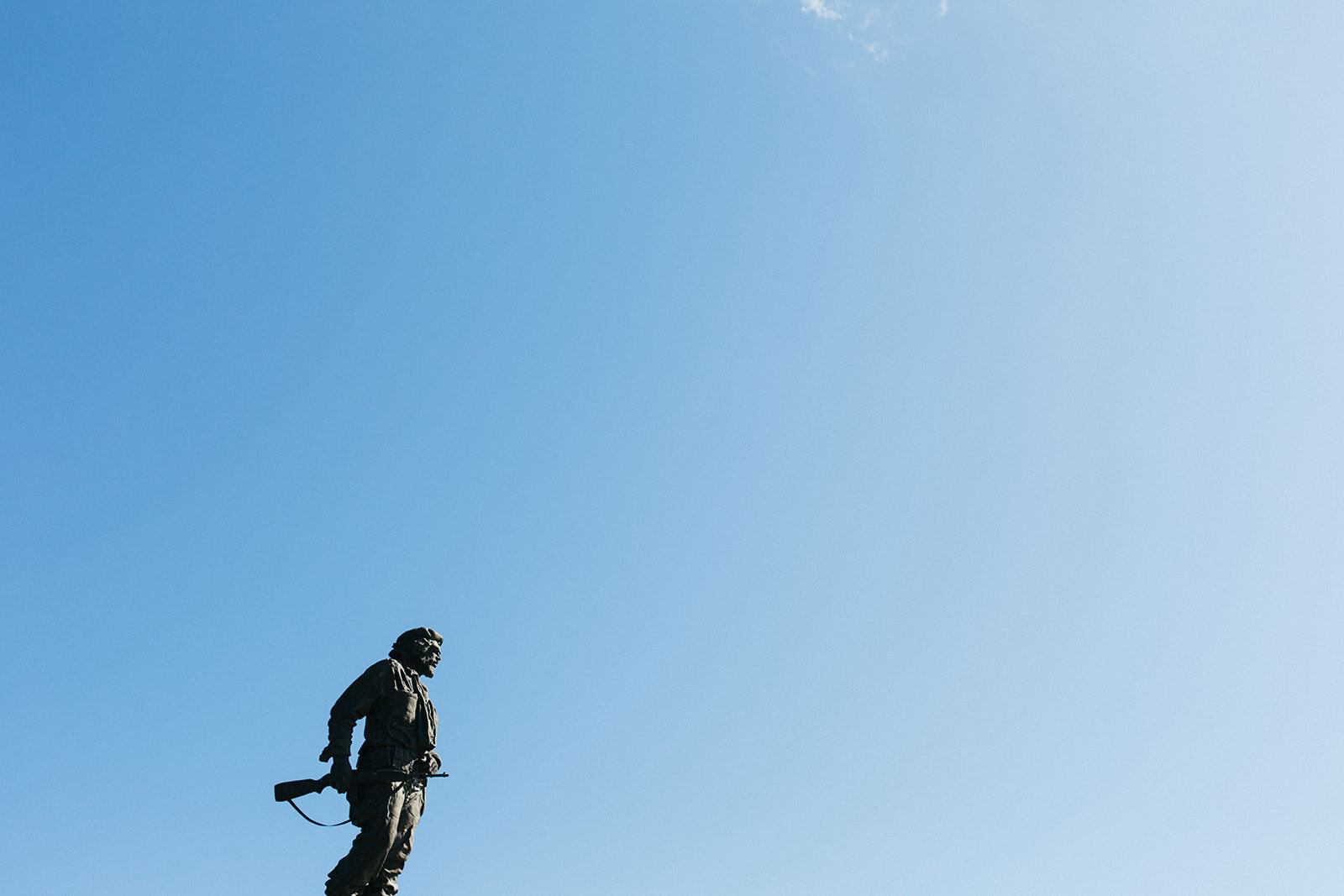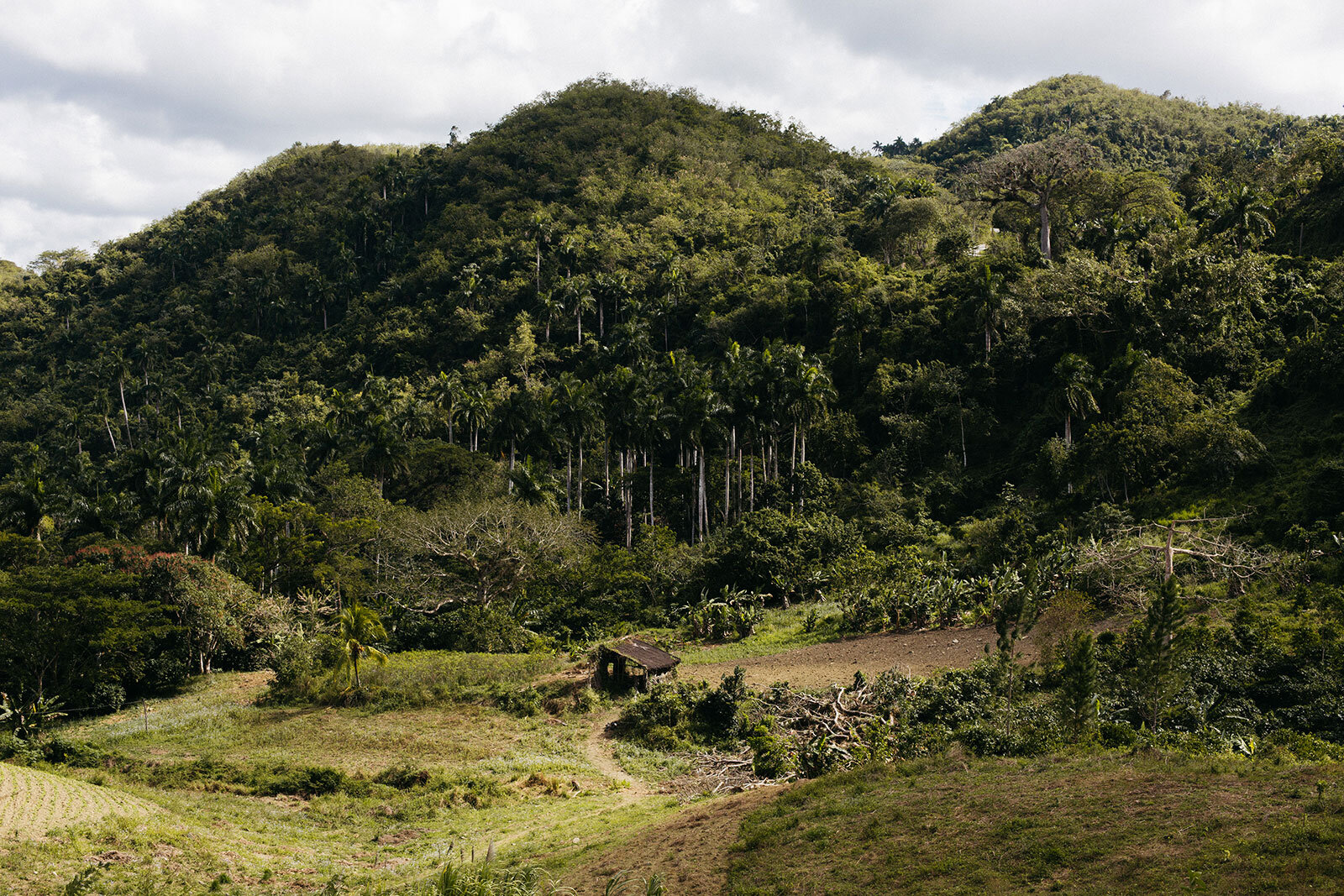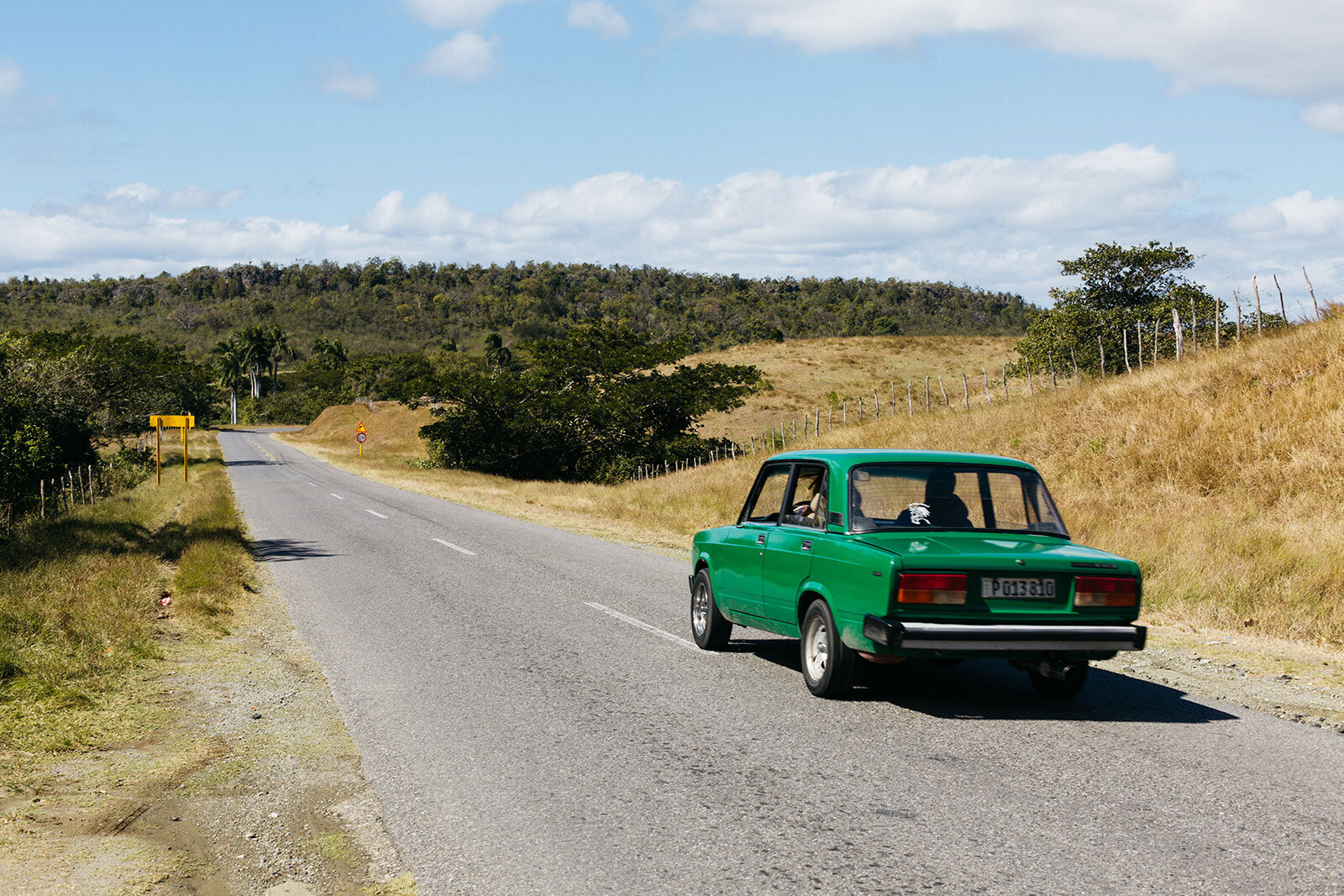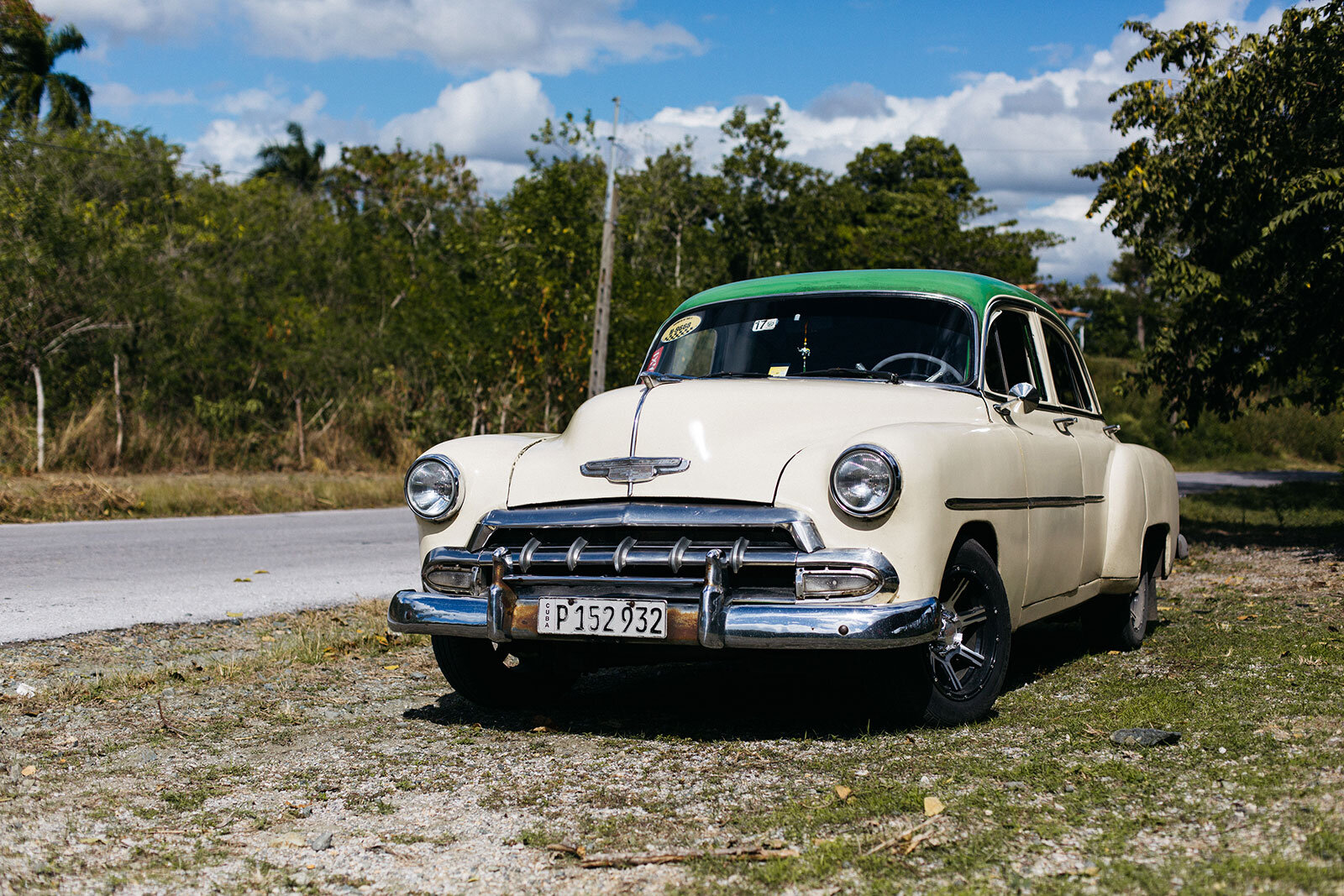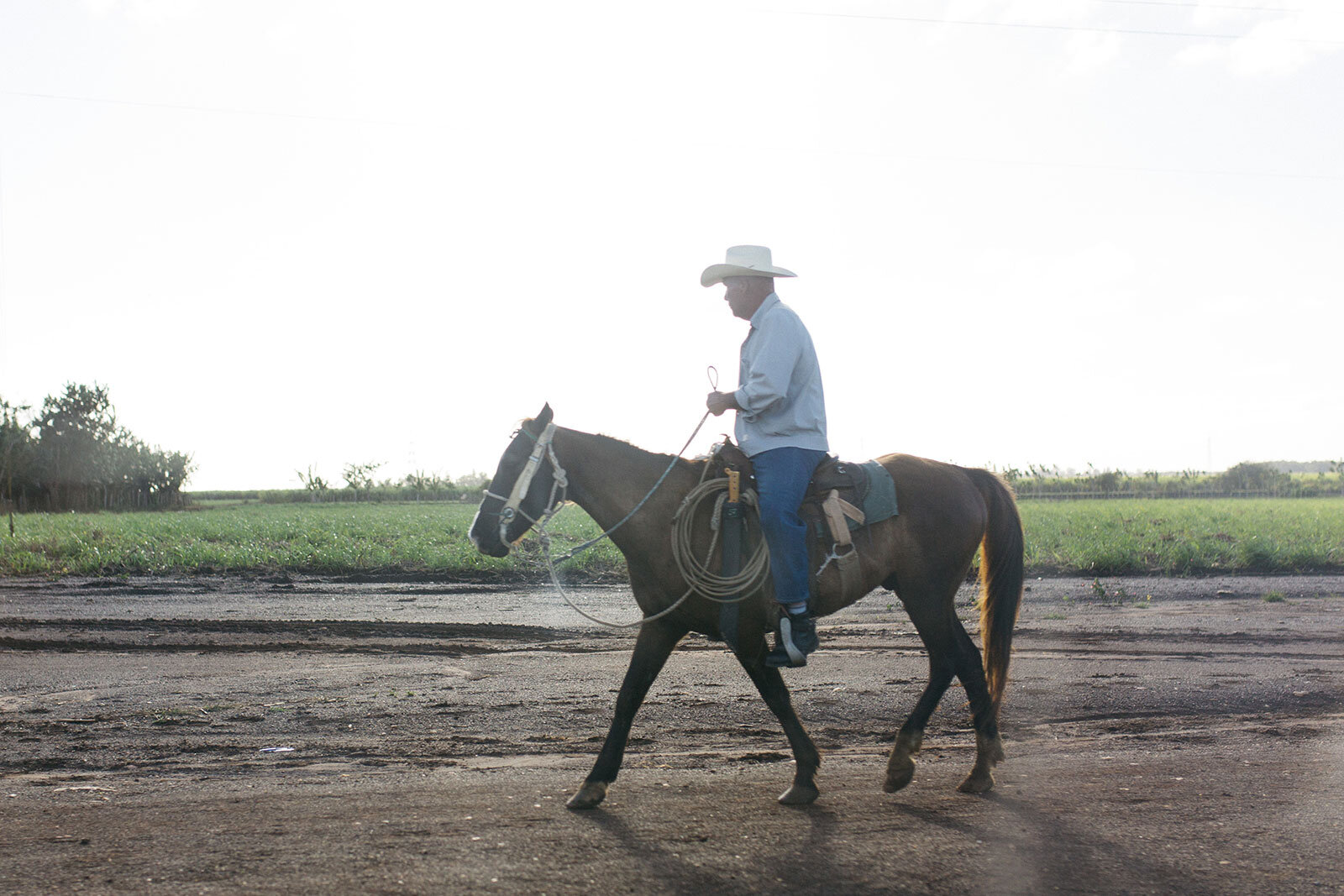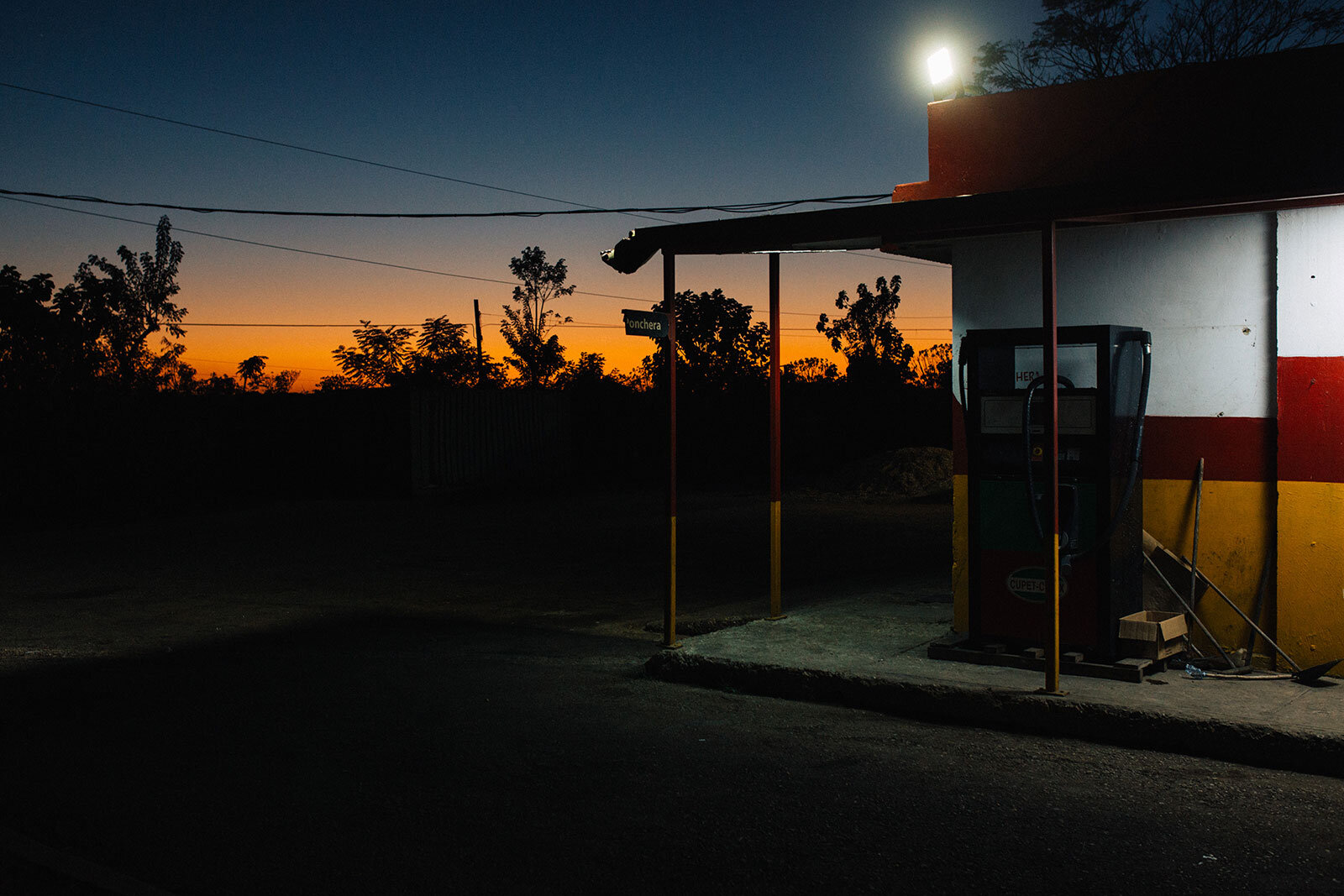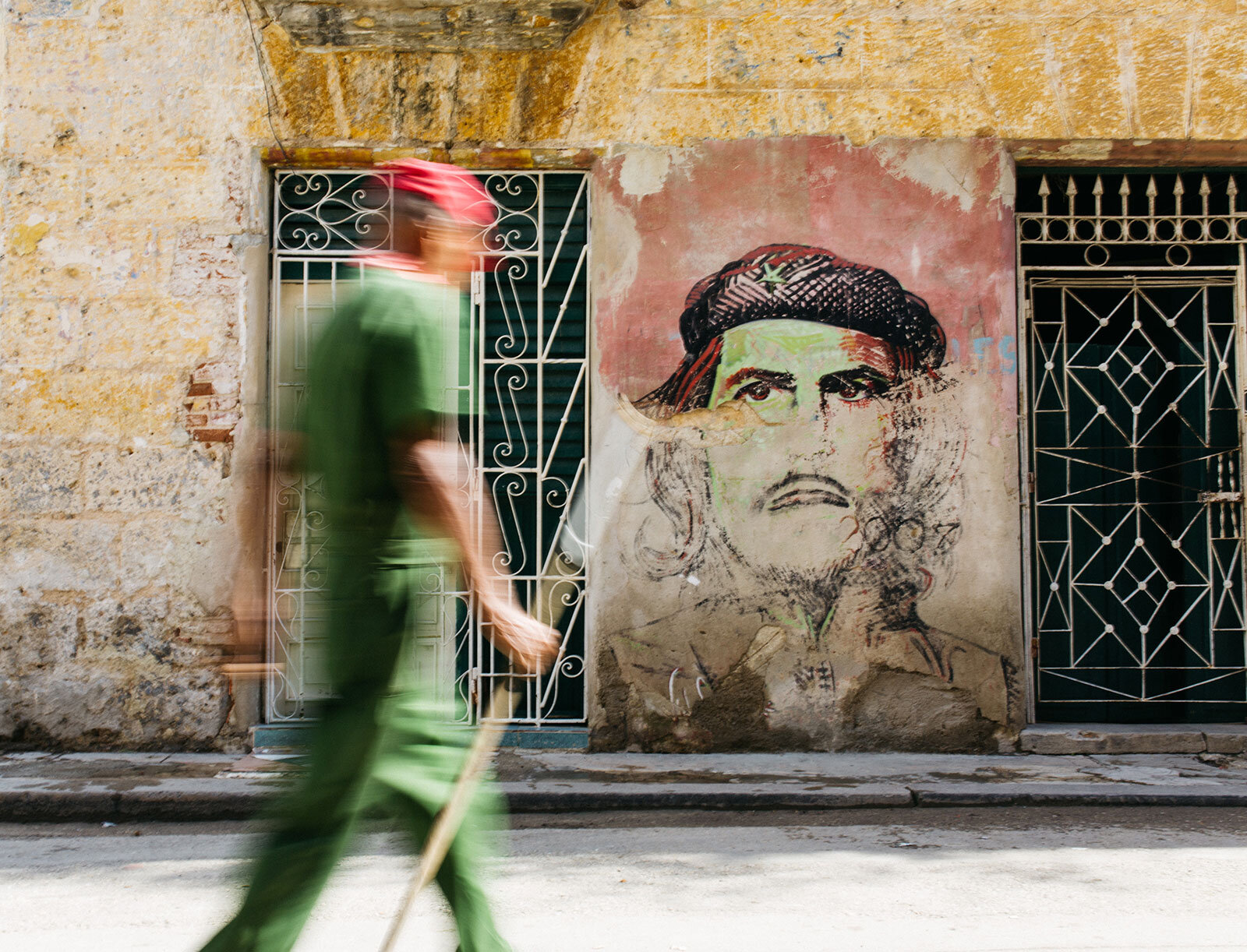Cuba: An Unforgettable Journey Through The Forgotten Isle Of Rebels, Revolutionaries & Dreamers.
Cuba is a paradox. Miles of political minefield, communist sanctuary and stronghold, emerging luxury destination, and an adventurer's paradise — all rolled into one. It has a fiery past and rebellious history, but its future is precariously uncertain. Here, Daniela Aroche reports on her personal experience upon visiting this polarising island which — for better or worse — continues to capture the imagination of travellers far and wide.
It is without a doubt, in my humble experience, that the initial and essential decision any aspiring traveller needs to make before embarking on a trip to Cuba is to genuinely ask themselves just what kind of holiday they want to have.
At a glance, this might seem like an obvious precondition, an irrelevant statement. But anyone who has heard or read anything about this Caribbean isle’s revolutionary past, present battle and future challenge should know and take into account before buying their ticket, that this is a country in the midst of an intriguing and heady transition — and that that shift, which is already at full throttle, offers two very different paths to any prospective ‘tourist’ who ventures onto its mysterious shores.
Part of its history is well-known for many — after all, one cannot think of the country without conjuring up the image of Ernesto 'Che' Guevara, the iconic Latin American revolutionary whose handsome face, haunting look and polarising legacy launched a myriad merchandising licences around the globe.
If you’ve been living under a rock, and haven’t heard of him — then Fidel Castro should ring a bell. You know — his fellow comrade in arms, communist stalwart, and the man who inspired a nation and led the rebel 26th of July Movement, which eventually toppled the empire of Cuban dictator Fulgencio Batista? That guy.
Yes, Cuba’s turbulent, feisty and fascinating most recent past poses no mystery to most, but those who dig a little deeper will discover that its captivating history stretches far further than that — way back to Diego Velazquez, Gerado Machado, Jose Gomez, Christopher Columbus, José Marti and the aforementioned Batista (although not in that exact order). Even the Italian-American mafia had their day here, (and quite a large casino outpost for a while), on this rugged and sultry strip of tropical paradise.
“For all of Cuba’s awe-inspiring richness of character... there is also another side to this sun-kissed island destination — a darker, more desolate and poverty-stricken underbelly…”
José Marti, Diego Velazquez, Gerado Machado, Jose Gomez et al, depicted in one of many renditions of their infamous negotiations.
And yet — for all of Cuba’s awe-inspiring richness of character, the inherent warmth of its local people and the vibrant tapestry that its multifarious melding of cultures has weaved through the ages; there is also another side to this sun-kissed island destination — a darker, more desolate, and poverty-stricken underbelly which can only be described as an eerie, silent landscape, where the ghosts and remnants of once-powerful rebels and so-called socialist radicals are all that remain in a land that even time seems to have forgotten.
* * *
But back to the choice. That first trip, the regular tourists meander, will lead you down a path of sunshine, rum cocktails, sunset dinners by the sea and general jolly rambunctiousness — and you’ll be in great company with the gaggle of American, Asian, and European jetsetters who are already flocking to Cuba’s shores in gleeful droves and in greater numbers every passing year, now that the communist curtain has lifted somewhat.
Choose this route, and what I can recommend is booking a perfectly organised airport pickup in an immaculately vintage classic car from the 1950s (online and ahead of time); followed by a check-in and stay at the brand-spanking five-star Hotel Kempinski in the capital, or the iconic Hotel Nacional (Havana’s prestigious and most famous Grande Dame, considered a symbol of its history, culture, and Cuban identity and still standing tall after 87 years in existence).
Once you’re settled in, take a relaxing stroll by Havana’s seaside promenade Le Malecon; dine at one of the many restaurants in the central business district and chic urban hub of Vedado; and then, if you’re up for a nightcap, listen to jazz at the speakeasy La Zorra Y El Cuervo or try any of the bars in the area for a taste of one the many top-notch rums that are produced locally all over the island (Havana Club Gran Reserva Añejo 15 años is our pick — best served with a cuban cigar of your choosing, if you can stomach it!).
If you have more time, then what many would recommend is a short day trip to Varadero, a resort beach town in the province of Matanzas (about two hours east of the capital) — one of the largest resort areas in the Caribbean, blessed with a 25km-long, white sandy beach and lined with all-inclusive hotels. Travel a bit further inland from there, toward the south and across the island, and you'll reach The Bay of Pigs — fated site of the failed military invasion of Cuba undertaken by the Central Intelligence Agency (CIA), back in 1961. Interesting enough.
Those with even more time up their sleeves can venture to the traditional and agricultural outpost of Viñales — in the opposite direction from the central point of Havana — a small town and municipality in the north-central Pinar del Río Province of Cuba. There, you’ll find a beautiful and lush valley anointed by UNESCO in 1999, where cigar-chewing guajiros drive their oxen and ploughs through rust-coloured tobacco fields; where life seems slower, and where you can buy the best cigars on the cheap that you’ll ever get your hands on.
For an even more tranquil, and pampering vacation, you can escape to any one of the myriad stunning playas and cayos which are draped around the island, each one of them more pristine than the next, boasting crystal clear waters and beautiful people sunning themselves on the golden sands — usually with fruity cocktails in hand. (NB: Those ‘people’ will usually be tourists, as the locals have to pay to get to these beaches and many can’t afford the trip or road tolls to get there.)
““Those who want adventure, are after a genuine immersion into the country — and want to get a real look at its people, past the dancing and the drinking... should dare to take the road less travelled.””
It’s a beautiful life, and no doubt a magical experience nonetheless, if you choose this path — as most people have, and will — particularly if you’re after a little touch of luxury as part of your holiday retreat.
After all, Cuba’s location — smack bang between the booming vacation hub of the Yucatán peninsula in Mexico, the U.S. state of Florida and the Bahamas, west of Haiti, and north of both Jamaica and the Cayman Islands — basically begs for the classic, seasonal sightseer to add it to the list of generic summer hotspots which are already full to the brim and overrun by the affluent jet-set.
However, those who want adventure, are after a genuine immersion into the country — and want to get a real look at its people, past the dancing and the drinking, and the illusion of its vintage cars, old restored buildings and perfectly painted plazas, should dare to take the road less travelled.
This journey, the one I took, is the revolutionaries' road — more sombre, and hard-won but, ultimately, I believe, all the more authentic.
It begins without a plan, a map, and on a shoe-string budget with a few local contacts scribbled down on a scrunched-up, grubby piece of paper, garnered from backpackers who had mingled with the locals and stayed with poorer families in posadas along the way before me.
My personal, and slightly tougher, trajectory through Cuba took me across one half of the country, stopping at Old Havana — the more decrepit corner of the capital — into the cobbled streets and colonial towns of Cienfuegos and Trinidad; and through to Santa Clara, the site of Che Guevara’s epic rebel battle and last showdown with Batista’s troops back in December 1958; and where his bones now lie in the memorial and mausoleum which is situated on the abandoned outskirts of the city.
On this trip, my photographer, his parents and I shared the road with Noel — our (very round, very outspoken and stubborn) Cuban driver — and his darling ‘caro’, a beat-up 50s Chevy, a glorious old beast of a vehicle — all white-and-green, and falling to pieces; but nonetheless his pride and joy. I’ve never seen someone who loved their car so much, or took such genuine care of it.
This is our story.
Havana: A Tale of Two Cities
As I’ve mentioned, Cuba has a rich and vibrant history of rebellion, revolution and fierce independence.
This hardy, resilient nation has always stood out in the history books because of that; and this feisty aspect of the country’s character is glaringly evident upon entry into Havana’s international José Marti airport (named after one of their revered revolutionary heroes).
When you arrive, the shift towards a very different society is palpable. Dressed in green military garb, the customs and security officers on-site are predominantly women — and each and every one of the female contingent is sporting sexy, close-fit uniforms and suggestive fishnet tights. It’s not too far a statement to say that you feel you’ve stepped into a Roger Rabbit cartoon.
Defiantly (the tights are not part of their official uniform policy) they flaunt their overt sexuality with a confidence most women wish they possessed, while checking and ordering tourists around, sassily (but brazenly) sending the clear and candid message about who’s boss in this new territory.
Getting a cab into town is another adventure. Pick whichever smiling assassin takes your fancy — the frank fact (and unspoken law of the urban ‘jungle’ here) is that you won’t be able to get a good deal on your ride in unless you’ve booked a driver online and ahead of time (see my point above) — and make sure you exchange some money into ‘Cucs’ (the official tourists currency) before you fly if you can — otherwise you’ll be at the locals' mercy on the exchange rate (they use ‘Cups’, not to be confused).
““The most popular streets are lined with bars, shops and restaurants (which tell the tale that communism is losing its grip to capitalism, even here).””
Once you’re in the glorious and bustling hub of Havana (which this year celebrates its 500th anniversary), the other thing you’ll notice, which is just as arresting as your unexpected welcome, is the warmth of the smiles that greet you as you stroll through the city streets. Cubans are known for it, and regardless of their current struggles, this vanguard of their vibrant and hospitable culture remains — in spades.
The key draws of the capital for most tourists are the impressive and expansive plazas, sprinkled throughout the city like majestic throw-backs to a time of plenty, before communism came and robbed them of their grandeur. The four main ones are the Plaza de Armas, Plaza Vieja, Plaza de San Francisco de Asis and Plaza de la Catedral, and a walking tour led by one of the locals is hands-down the best way to discover them, and will provide you with a magical journey through five centuries of history and architecture, which culminate to comprise Cuba’s first of many UNESCO World Heritage Sites – “La Habana Vieja” or Old Havana.
The most popular streets are lined with bars, shops and restaurants (which tell the tale that communism is losing its grip to capitalism, even here), and many of the main buildings surrounding the plazas have been somewhat restored to their former glory. Some weathered structures across the city have even been taken over, gutted and transformed into galleries or hotels — like the aforementioned Kempinski, old site of the historic Manzana de Gómez (Gómez Block), an early-20th-century building that was originally Cuba's first shopping mall.
Once you’ve seen that, and all the other tried and trusted hotspots — El Capitolio, Catedral de San Cristobal, Castillo de la Real Fuerza, Fortaleza de San Carlos de la Cabaña (Che’s former, official command headquarters), Museo de la Revolución, etc; and walked in Hemingway’s footsteps (La Floridita, La Bodeguita del Medio, and our favourite, the Hotel Ambos Mundos) — however, what I would recommend is exploring some of the lesser-known alleys, cultural hubs and smaller bars and dining nooks recommended by the locals. A few such spots are the Museo de Mexico, Finca Vigía (Hemingway’s house); and Draquecitos — a tiny hole-in-the-wall restaurant in Old Havana that you’ll definitely miss, if you don’t know what you’re looking for.
““Havana is a paradox...That is the harsh reality for anyone who dares to scratch the surface of this once majestic city.””
Here — a charming young Cuban by the name of Alexis and his partner Elianet cook up delectable Cuban fare, with heart, soul and smiles — and they speak English too, if your Spanish needs some work. You won’t regret it — they are absolutely the most gracious hosts, and the loveliest people you could ever hope to meet. They also run a travel company — Blue Paradise Booking* — and can organise a car to take you around (Noel is one of their contacts), accommodation with the locals, and pretty much anything else you need while you’re in town. They helped us more than once out of the kindness of their hearts, and will remain our friends for life.
*No website just yet, they tell us it’s a work in progress. We will definitely update with a link once it’s live & kicking.
In essence, Havana is a paradox, in its own right — one half boasting impressive old-world opulence with its refurbished buildings, organised plazas, bustling streets and dining spots overrun with tourists; while the other side of it, where many Cubans live, looks like a shanty town of dilapidated edifices — the buildings scarcely standing — just skeletons of colonialism with crumbling walls, housing locals who have barely enough to eat because they are restricted to meagre rations of a bag of rice, a stick of butter and a handful of beans every month.
That is the harsh reality for anyone who dares to scratch the surface of this once majestic city.
It is still hauntingly beautiful though, and very fun after hours if you’re a bit of a night owl — so head to the bars post-sunset if you dare; it’s definitely worth your while.
Off The Beaten Track: Cienfuegos, Trinidad & Santa Clara
If you have more time, and want to see something other than the aforementioned Viñales, Varadero, Bay of Pigs and all the beaches; then Cienfuegos and Trinidad are two perfectly preserved UNESCO world heritage sites, which offer colonial charm by the bundle.
Cienfuegos (named after, and in honour of, Comandante Camilo Cienfuegos Gorriarán — Che’s fellow Cuban freedom fighter, righthand man, comrade in arms and best bud in the trenches) is a pretty little city, founded by the French in 1819, which many describe as the Paris of Cuba and The ‘Pearl of the South’ — and for good reason. It’s quite new and very different from other cities we saw, so well worth a visit; as is Trinidad —a Spanish colonial settlement and home to the stunning Museo Romantico, housed in Palacio Brunet, once the home of rich sugar baron Conde de Brunet.
However, my favourite, and perhaps the least visited location of all those I’ve mentioned here, is Santa Clara — Che Guevara’s beloved city and final resting place.
There’s not much to see here for the regular tourist — other than my calling, which was the Museo Histórico de la Revolución and the Che Guevara Mausoleum, crowned by a massive bronze statue of the revolutionary leader, under which Guevara and other fighters lie — but this particular place is full of life somehow, and it truly left a mark, although we didn’t stay long.
Here the spirit of the revolution seems stronger, for obvious reasons — and the people seem happier, seem to have more.
The Santa Clara Hotel. Littered with bullet holes from Che’s famous battle that ultimately made the revolutionaries victorious.
In the main square, on the sole night we stayed, we danced in the moonlight with a troupe of weathered musicians at the old Teatro de Caridad, to the sounds of salsa and Afro-Cuban jazz; and I dare say that these local artists are ten times more authentic than any band you’ll pay to see in Havana — even the famous Buena Vista Social Club (we didn’t see it but I haven’t heard good things — too touristy and overpriced apparently).
In the morning, we mingled with locals over fresh-brewed coffee, packed our bags, and took one last look at the Santa Clara Libre Hotel in the centre of the city — where more than 50 years ago, Che Guevara won the final battle of the Cuban revolution and clinched it for Fidel Castro, sending General Batista fleeing from the country. The bullet holes from that epic last stand are still there, etched into the concrete walls of the iconic edifice today.
Along our bumpy road through Cuba, we had many run-ins with the locals, a few spats with our driver Noel, and several moments where we thought we might not make it back in one piece. There’s miles more to tell than can be fit into one feature, but suffice to say: this route, whilst riveting, is absolutely not for the faint-hearted. You have been warned.
That said, perhaps the most interesting and telling experience of the entire trip is one which beautifully encapsulates the true soul of the Cuban people and exemplifies the real ethos behind their socialist ideals.
Somewhere along the way, we got a flat tyre, and Noel (our dutiful driver) stopped mid-way on the dusty track to take stock of the damage. There, nestled along the curve of the desolate dirt road, a Cuban farmer was building his house, painstakingly but methodically cutting each portion of wood and slowly stacking it to make his home, piece by piece.
They greeted each other warmly, as if they were brothers or long-lost friends, even though they had never met, and Noel proceeded to ask him whether he had a spare tyre, some food, or some sort of gizmo for the wheel. The man responded “yes”, and asked Noel up to the main farmhouse on the hill.
““As is often the case in many revolutions — sometimes, we must destroy the remnants of the past, in order to usher in a new era, some semblance of change, of improvement.””
Grabbing a bag of bananas from the back of the car, Noel turned and left us without a word, stranded and slightly confused as to what was going on… and an hour later he had not returned. When he finally did grace us with his presence again, he had the gizmo for the wheel, and a bag of oranges. No bananas in sight.
When we asked him about the exchange, and whether we had to pay for the wheel and the man’s assistance, he simply looked at us and scoffed — “We don’t do things that way here,” he said. “He’s my brother. He’s happy to help me — he just asked me to swap him some *bananas for the wheel, and then he gave me some oranges for the road.” *Bananas, it seems, are quite hard to get your hands on in Cuba — so that was well worth the wheel gizmo, and some oranges too. Not that that was the point, or the reason he got the gizmo. (Of this he was adamant.)
That fleeting, simple, exchange of genuine greeting and generosity told me all I needed to know about capitalism, socialism and everything in-between when it comes to Cuba.
Yes, as is often the case in many revolutions — sometimes, we must destroy the remnants of the past, in order to usher in a new era, some semblance of change, of improvement.
But that doesn’t mean we should abandon our foundations, our history, our dignity, or the basic vestiges of what makes us all human. Those simple exchanges from one person to another, that sense of solidarity where a helping hand doesn’t come at a price.
That was, perhaps, Che’s dream, his initial aspiration, and the purest crux of the message that he sought to convey, communicate and bring to fruition through his (original) ideologies, musings & literature — at least during his younger years — and most essential shift in human thinking that his revolution yearned to achieve, and struggled to bring about.
Yes — it may have, ultimately, faltered. That is left to each and everyone’s personal opinion. Maybe he and his comrades did get lost, made mistakes, committed grievous errors, crimes even; and, sadly, fell short of their objectives and the hopes of the people that loved them (many of whom love them still). Again, that is up to each individual’s personal take on it.
And yes — the world has moved on, and, perhaps — so must Cuba, in order to survive, and to thrive in this new, modern environment which has proliferated around it — indeed, the people themselves seem to be crying out for yet another significant change across the board (and economically, at least).
Exactly how they decide to do it, however, will determine whether they honour the most core ideals of their heroes, combatistas y comandantes.
* * *
One thing though, is that vultures are everywhere. Figuratively, and literally. Circling overhead in every city, across every landscape.
These haunting birds are an intrinsic element of nature here, and a common sight every time you look to the skies. But, to me, they seemed to embody an omen of what could be to come. A fitting metaphor for the grubby hands of capitalist opportunists and would-be exploiters surrounding Cuba and setting up luxury hotels and expensive restaurants across the island (several more each year) — the United States, for some arguably this tiny nation’s eternal arch-enemy, the most ravenous of them all; eyeing this last, forsaken sanctuary of socialism with glee and rubbing hands greedily, patiently waiting for its moment to strike and swoop.
That sense of an unspoken, unseen — but unwaveringly impending menace is always there. A shadowy, perilous presence — watching and lingering in the ‘wings’ for opportune instances at which to advance and collect its valued prize. The primary objective: to tear the (relatively) untapped richness of Cuba’s resources from its revolutionary bones, while it’s on its last legs of hope, the people’s once rebellious resolve weakened in the face of time — betrayed by the core ideals of Marxism, disenchanted with the dreams of a Utopian solidarity wholeheartedly sold to them by El Che; their society fragmented by the gaps of a generation, weathered in the face of time and hard-fought struggle, local citizens exhausted from a million promises unanswered and unfulfilled, and now thirsting for economic change — yearning for the future but caught at a crossroads, and at a loss for a new leader who can truly pioneer a positive transition for the country, without sacrificing their dignity and hard-won independence, forged from a millennia of fighting — now that their revered revolutionaries, protectors and prophets are dead and buried; their words like ashes of what once was, blowing in the wind, alongside their monuments of bronze, and laid to rest in dusty catacombs.
““Vultures are everywhere. Figuratively, and literally. Circling overhead in every city, across every landscape... to me, they seemed to embody an omen of what could be to come, a fitting metaphor for the grubby hands of capitalist opportunists and would-be exploiters surrounding Cuba””
Vultures circling the Habana Libre Hotel.
But what is the future?
Just this June, the Trump administration imposed major new travel restrictions on visits to Cuba by United States citizens, including a ban on many forms of educational and recreational travel, which promise to cut off one of the main avenues for Americans to visit the Caribbean island and will likely deal a heavy blow to the country’s already-fragile economy.
At home on the isle, a new president — Miguel Díaz-Canel Bermúdez — was recently inaugurated (in April 2018) — handpicked by Raúl Castro (Fidel’s brother); a virtually unknown candidate whose political leanings are yet to be set in stone. According to the local people we spoke to, he is still a socialist with strong communist ideals, but is considerably more open-minded on the subject of economic development, international trade, and tourism; and is a ‘man of the people’ who has already started to make tracks on initiatives to improve the country — including plans for a fresh transport system and new buses. We shall see.
Vacation numbers are also up — and set to rise, despite the future ban for Americans — with Cuban Tourism Minister Manuel Marrero announcing (via Twitter) in May that two million visitors have already arrived on the island so far this year — a figure reached 12 days earlier than in 2018.
To boot, the country’s luxury appeal is also growing, with several lifestyle-led news outlets announcing that Cuba is entering the market with gusto — and investors are taking note. The aforementioned Kempinski conglomerate for example, seems to have found its golden egg and thinks it’s onto a winner — it has already made plans to open up a second location there — a high-end facility in Guillermo Key, north of the central province of Ciego de Avila. Apparently, there is now also a shop selling a camera for more than US$25,000 (RM102,000) in Havana.
Some may call this ‘progress’, but — when you compare that to the daily life, run-down accommodations, and meagre food rations of a local Cuban, and the general population — in a country that has been governed as a one-party communist state since 1959, with a shady human rights record where the government reportedly (according to Human Rights Watch) continues to repress and punish dissent and public criticism; and where the average wage is US$30 (RM122) a month — the statistics don’t exactly match or add up, and it leaves a lot of room for error; and food for thought about what might become of this controversial country in the years ahead.
“Cuba’s challenge today is the same as it is for the rest of the world: It’s not about socialism versus capitalism, but about finding a new way forward altogether””
In conclusion, ultimately, the best advice I can give to anyone considering a Cuban travel adventure is two-fold:
Go quick, before it changes; and go there with a clean slate, ready to have your opinions, impressions and preconceptions of the country, its culture, its people, and its politics irrevocably challenged and confronted by the revelations of its present reality.
Enter their airspace and political parlour with an open mind, an inquisitive attitude and a promise to view your experiences through the prism of truth, objectivity and positive transition.
In my own short-lived, but jam-packed, experience mingling with both the locals and luxury vacationers alike, my time in Cuba has had an impacting effect on my views over what needs to happen next to take the country — and the world — forward into a new, prosperous era of evolution and change; where its people of all classes, races and political ideologies are the ultimate victors and beneficiaries.
This is not a political article, however, and so I’ll leave those ‘pensamientos’ unsaid.
But what I will say, is that for me — the lasting sentiment that has emerged from my time in the country, is that Cuba’s challenge today — is the same as it is for the rest of the world:
It’s not about socialism versus capitalism, but about finding a new way forward altogether.
Transitioning to a workable system which isn’t built on the remnants of an old-world order and the uncompromising, archaic ideologies of the past, but on the true tenets and most admirable aspects of the revolution that Che sought to bring about. A society which is just, inclusive, educated and open to change for the better, even if it means inconveniencing the luxuries of the privileged few — one based on equality rather than elitism, and genuine solidarity as a human nation in fighting for more humanity and justice across the board and around the world.
So, perhaps the real battle we are all fighting, and should be, going forward is that which lies within each of us — to strive beyond the barriers of our baser instincts, past petty rifts and towards true progress, enlightenment, and against the insensitiveness and ignorance which threatens to ever-so-subtly engulf our humanity each and every day. That is, in my view, a wholly, heartfelt and worthwhile aspiration for the future — and, maybe, our only real and potential ‘saviour’.
Because — for all our differences, disillusions and the infinite number of things which divide us, we are — at the bitter end, and bottom line — ultimately, all cut from the same cloth, equal blood... and, for better or worse: forever, irrevocably, and intrinsically bound by both the beauty and brutality of the singular blue planet which birthed us.
““Havana had once again been brought to its knees, the age-old shells of its ancient buildings ravaged by the powerful forces of nature which are part and parcel of its tropical location on the continental shelf, smack-bang off the Gulf of Mexico.””
Back To Base, Farewell: Y Hasta La Victoria, Siempre.
We made it back to Havana — a little worse for wear but full of memorable experiences — barely escaping the tail of a tornado which had swept through the city, less than a day before our arrival. Havana had once again been brought to its knees, the age-old shells of its ancient buildings ravaged by the powerful forces of nature which are part and parcel of its tropical location on the continental shelf, smack-bang off the Gulf of Mexico.
On our last day, as the sun set on the horizon, I took stock of the (many) things left unfinished on our trip ‘to do’ list — one of them being a single photo that we had wanted (and previously asked & arranged) to take of our taxi driver Noel — and asked my photographer if we should indeed just ring him on the fly; if only to that one last, elusive portrait of him with his prized caro, which we hadn’t managed to shoot in the end, amidst the throes of our whirlwind trip.
He turned and looked at me, wide-eyed and gobsmacked, as though he was trying to decide whether I’d had a mental aneurism, or just lost my mind at long last.
“No.” Is all he could muster to mutter under his breath. Then he paused, looked at me curiously and followed it up with: “You were just kidding right? We haven’t been here a minute but you must know how things work around here by now. It’s last minute, this impromptu exchange with him hasn’t been negotiated properly... and he’s probably got a million better things to do. He’s not going to come here just to have a beer with us and take a photo, for free. Or even paid — unless it’s really worth it for him.”
In that moment, I knew he was right. And as much as that naked truth — and the loss of that white-whale, prized photo on our unfinished' ‘to-shoot’ list — stung me; the bare fact that the chance had escaped us due to a lack of planning and basic cultural logistics was also strangely comforting.
Because, in the end — all Noel was really doing that day was sticking to his quintessential Cuban roots by side-stepping my last ditch effort at a planned photo opportunity. Rolling with the punches and living life with gusto, as a rebel at heart with a spring in his step and a healthy dose of disrespect for authority — always hoping for the best, fiercely prepared for the worst and ultimately, operating as a hardy survivor; standing up for his hard-fought freedom against all odds — more than capable of standing on his own two feet, without any of us Westerners (regardless of our political leanings) telling him what to do, where to be, or which way he should turn next.
All I can hope is that that unique spirit of his — and that of his wonderfully diverse, impossibly intricate, and incredibly complex country, with its impressive history — never changes.
We may have won a few battles along our mismatched Cuban journey-nee-adventure, but ultimately, he had won the war of wills.
“Hasta la victoria, siempre.”
I love you Cuba. x
Words by Daniela Aroche
Photos by Rhodri Jones












